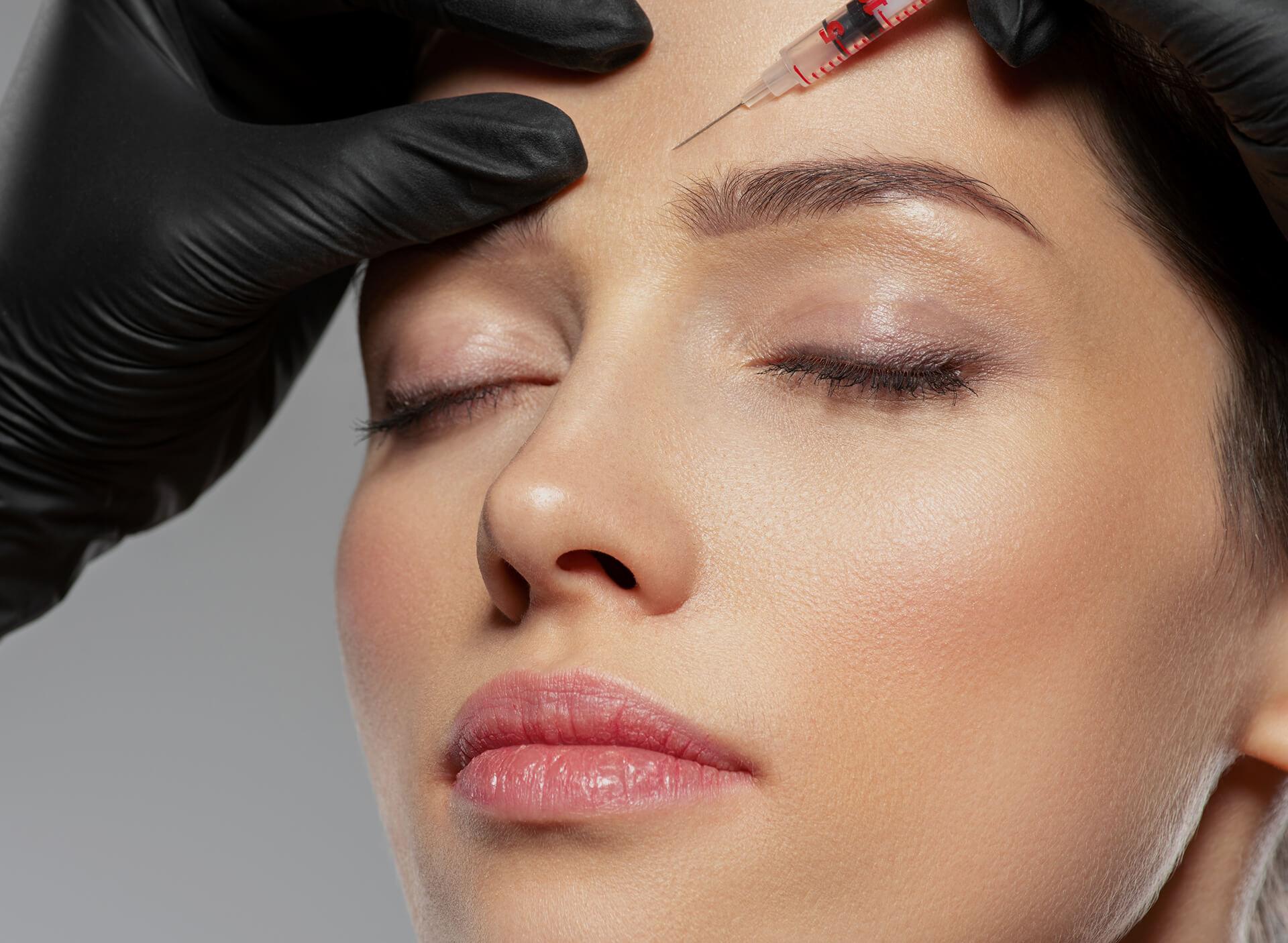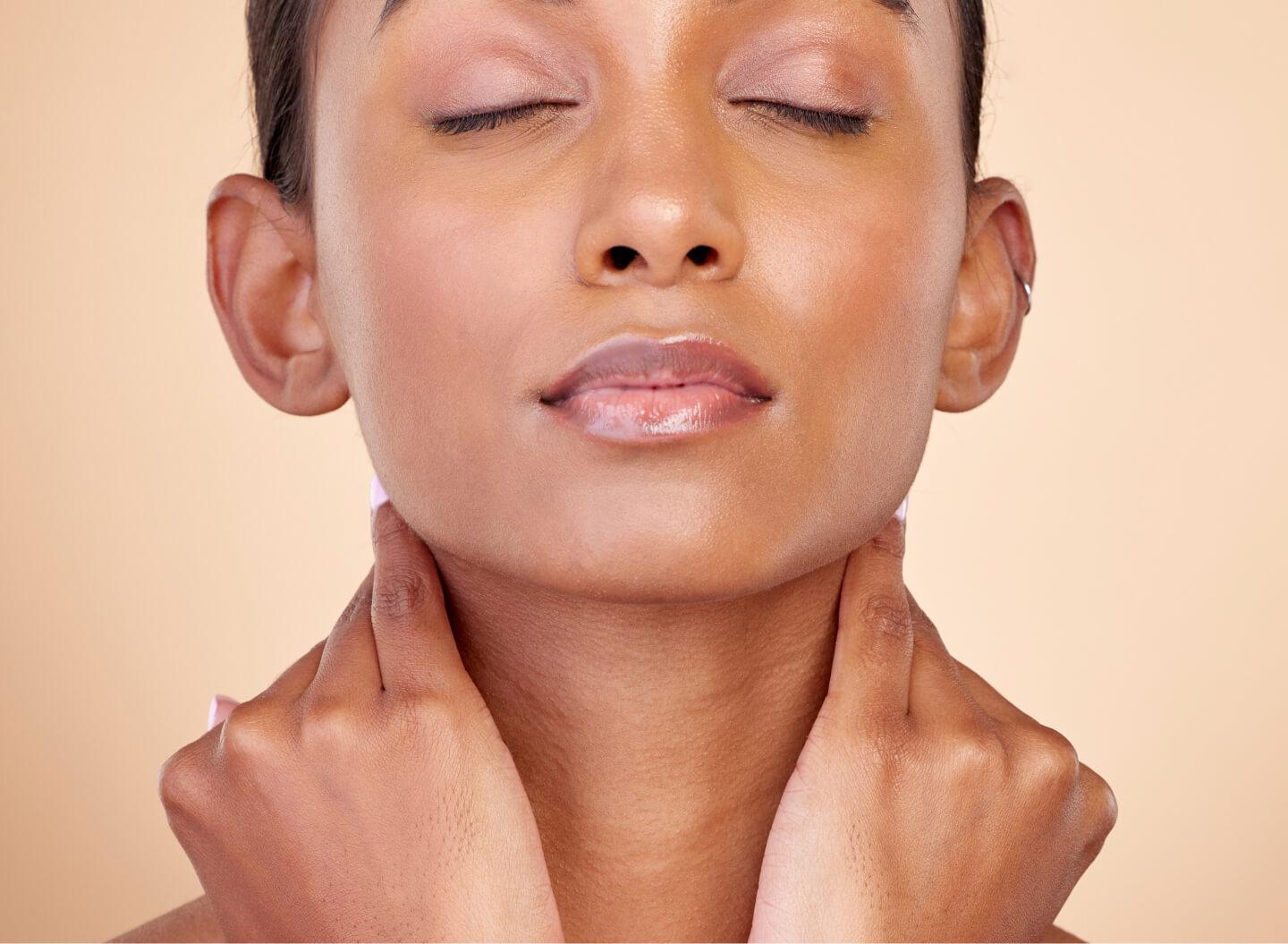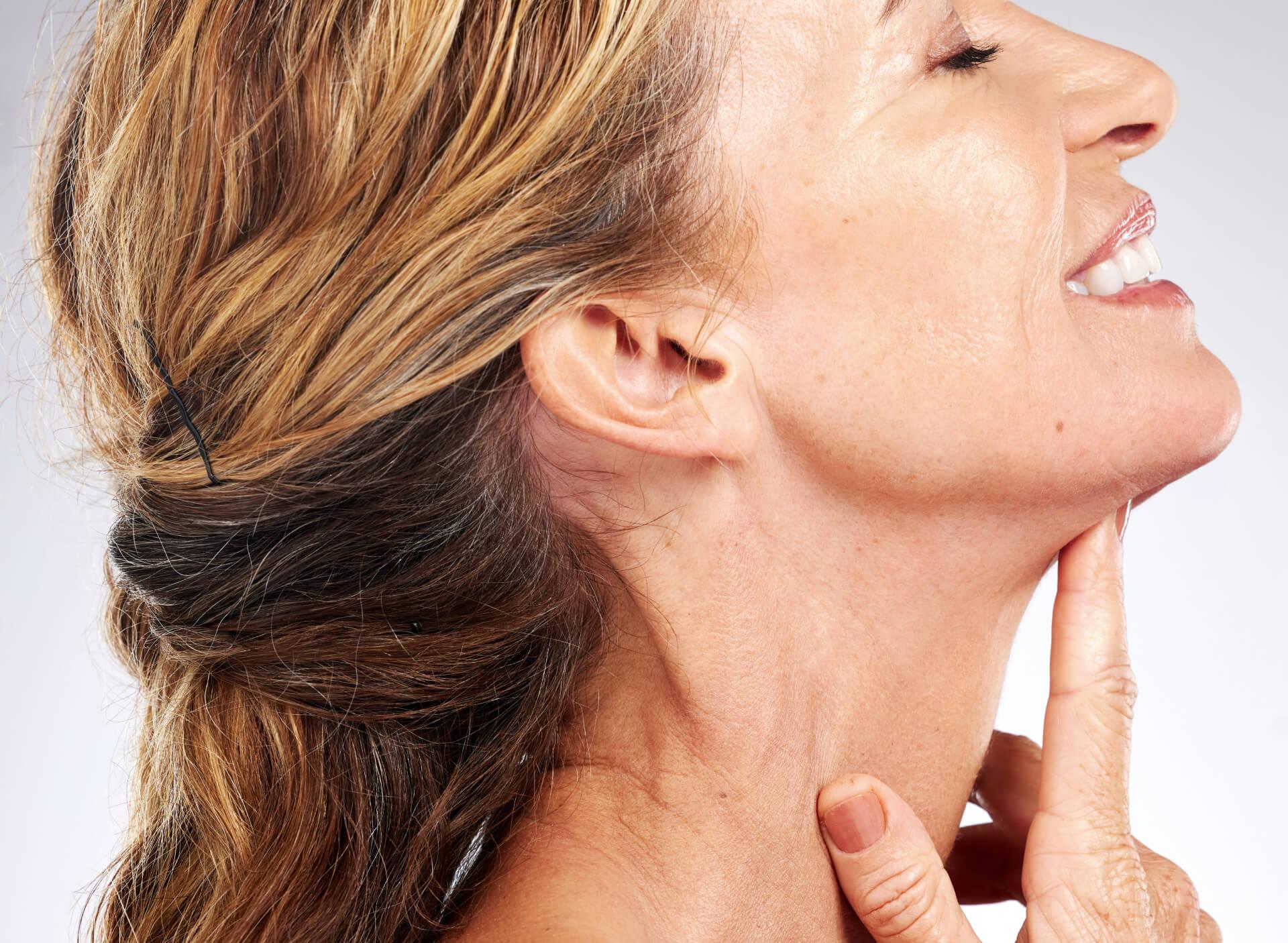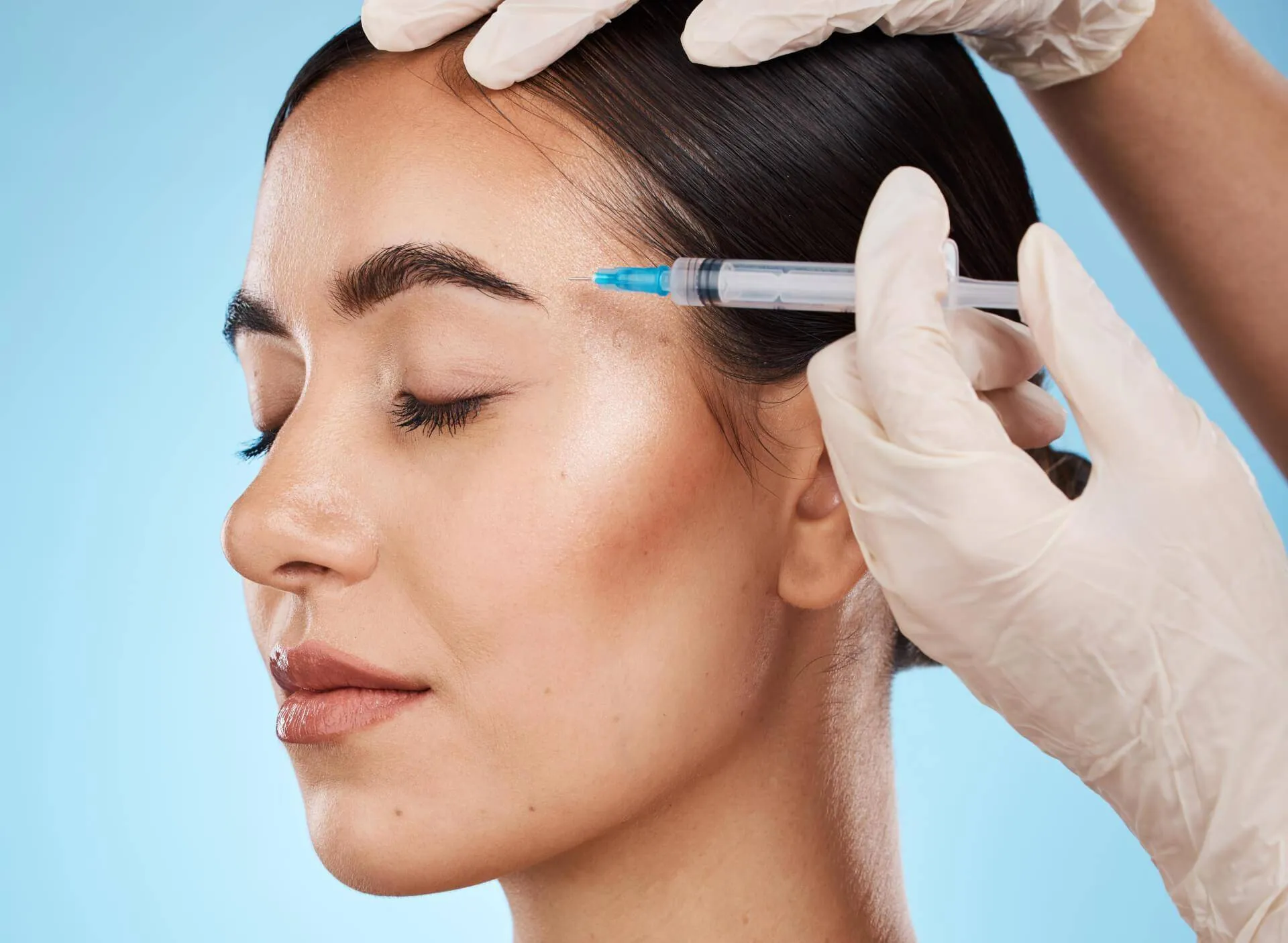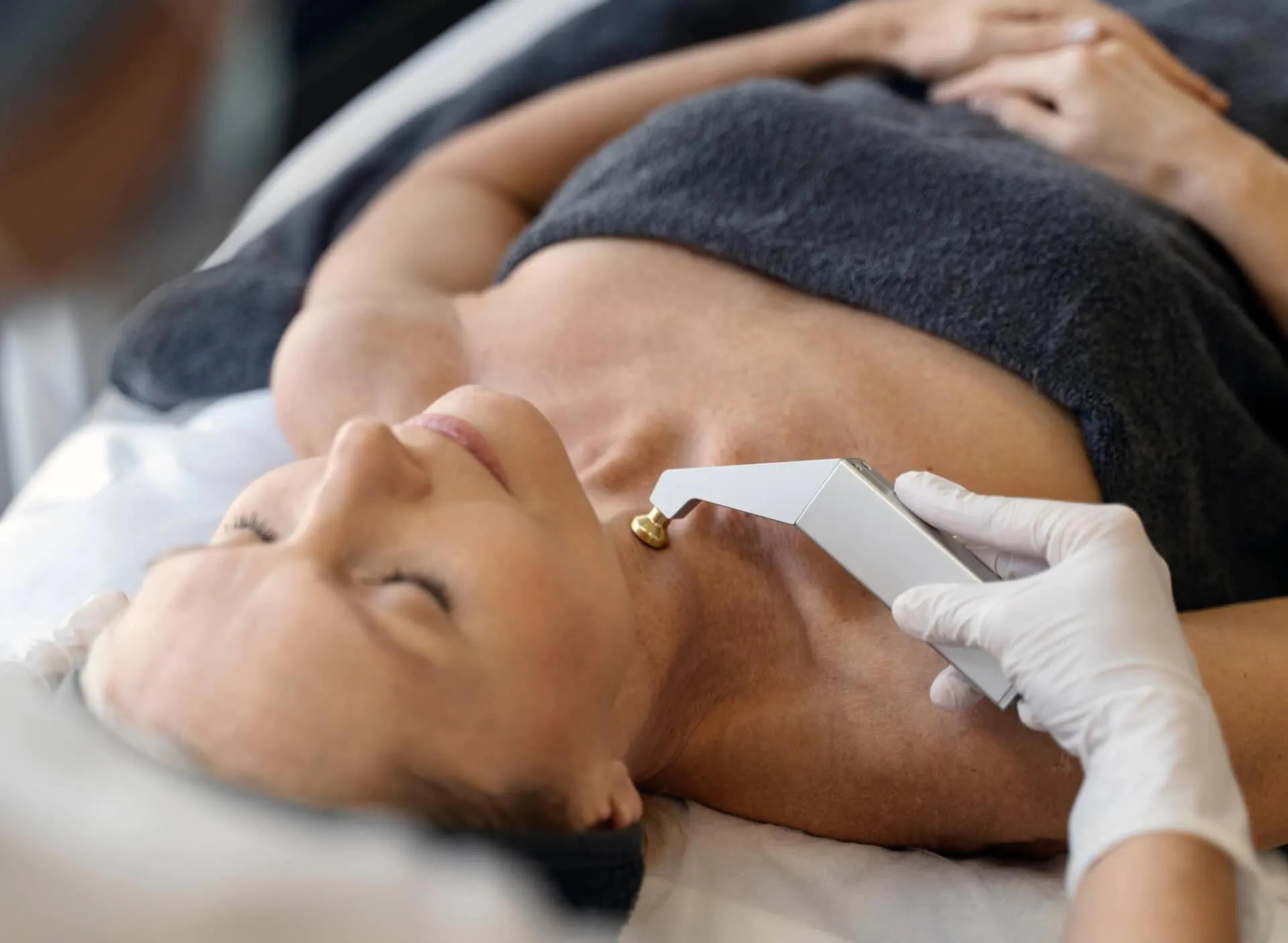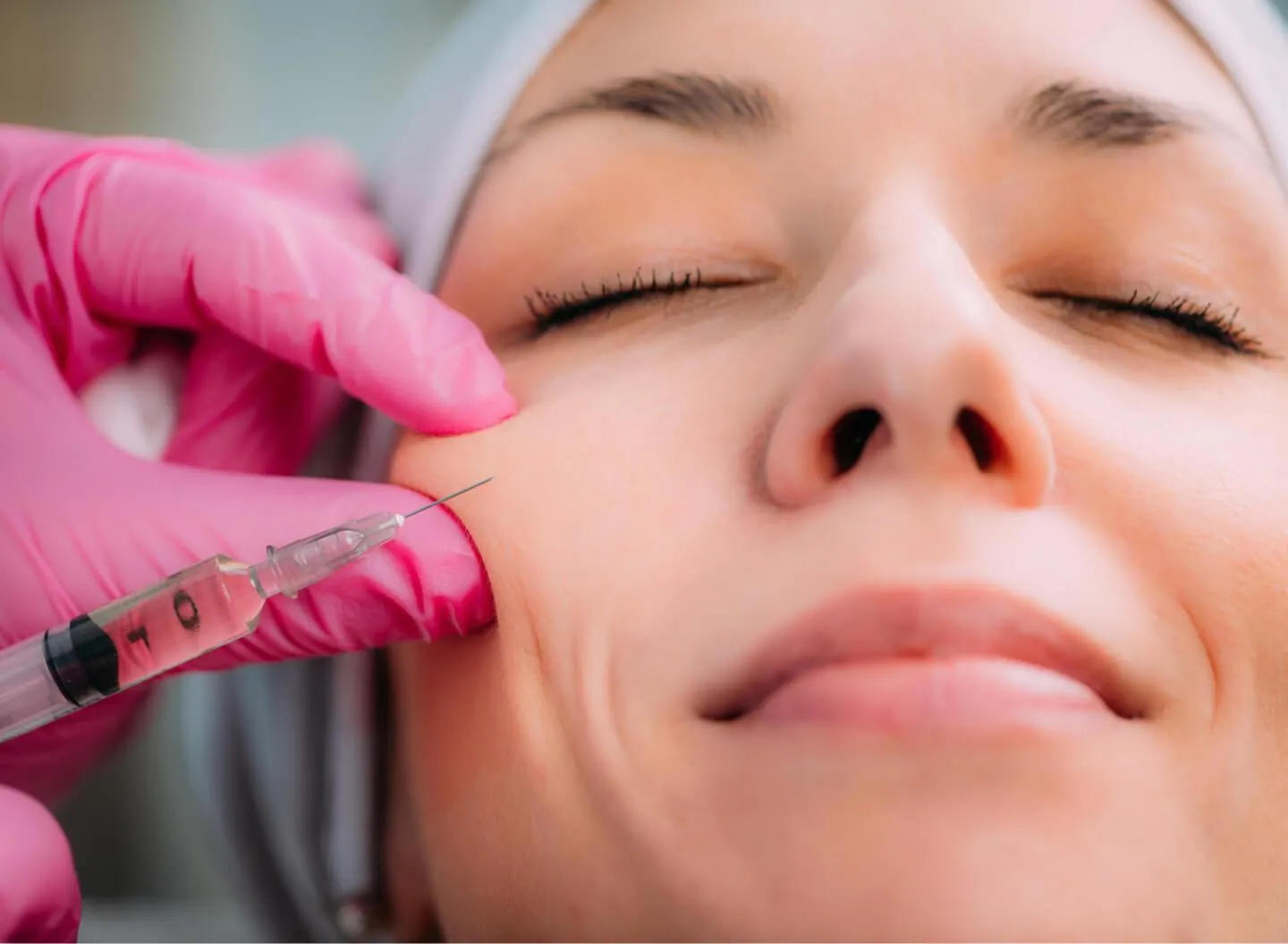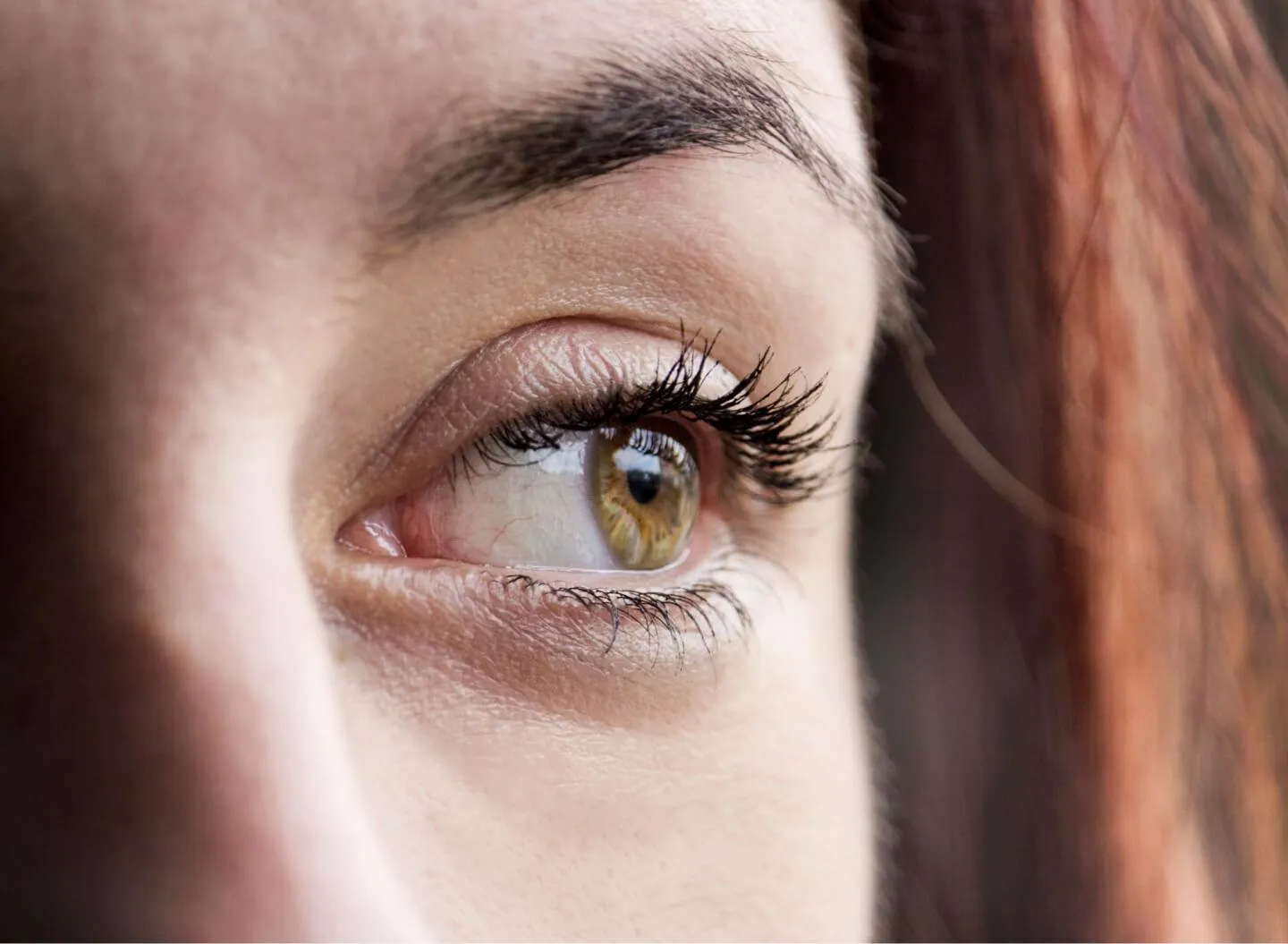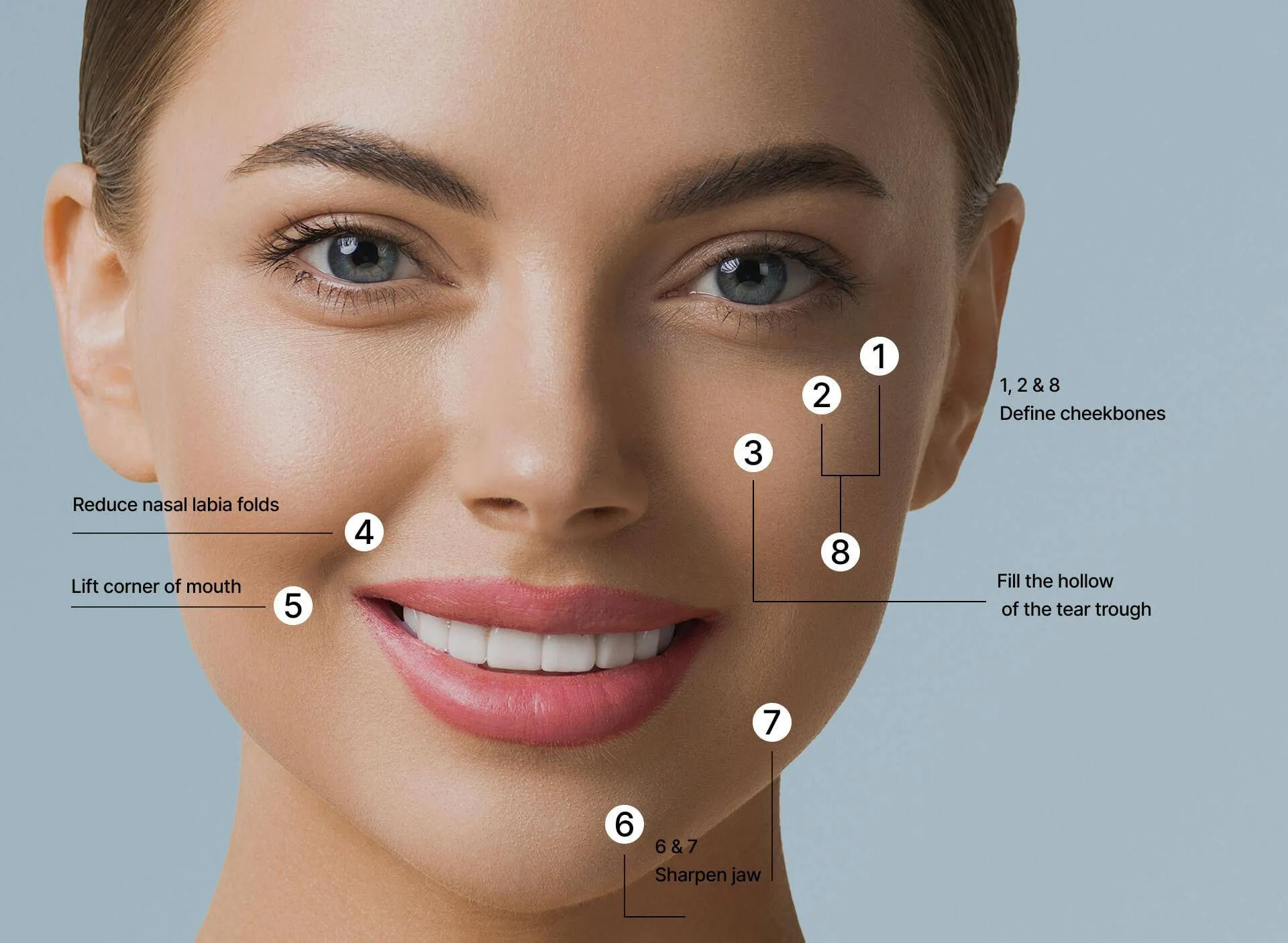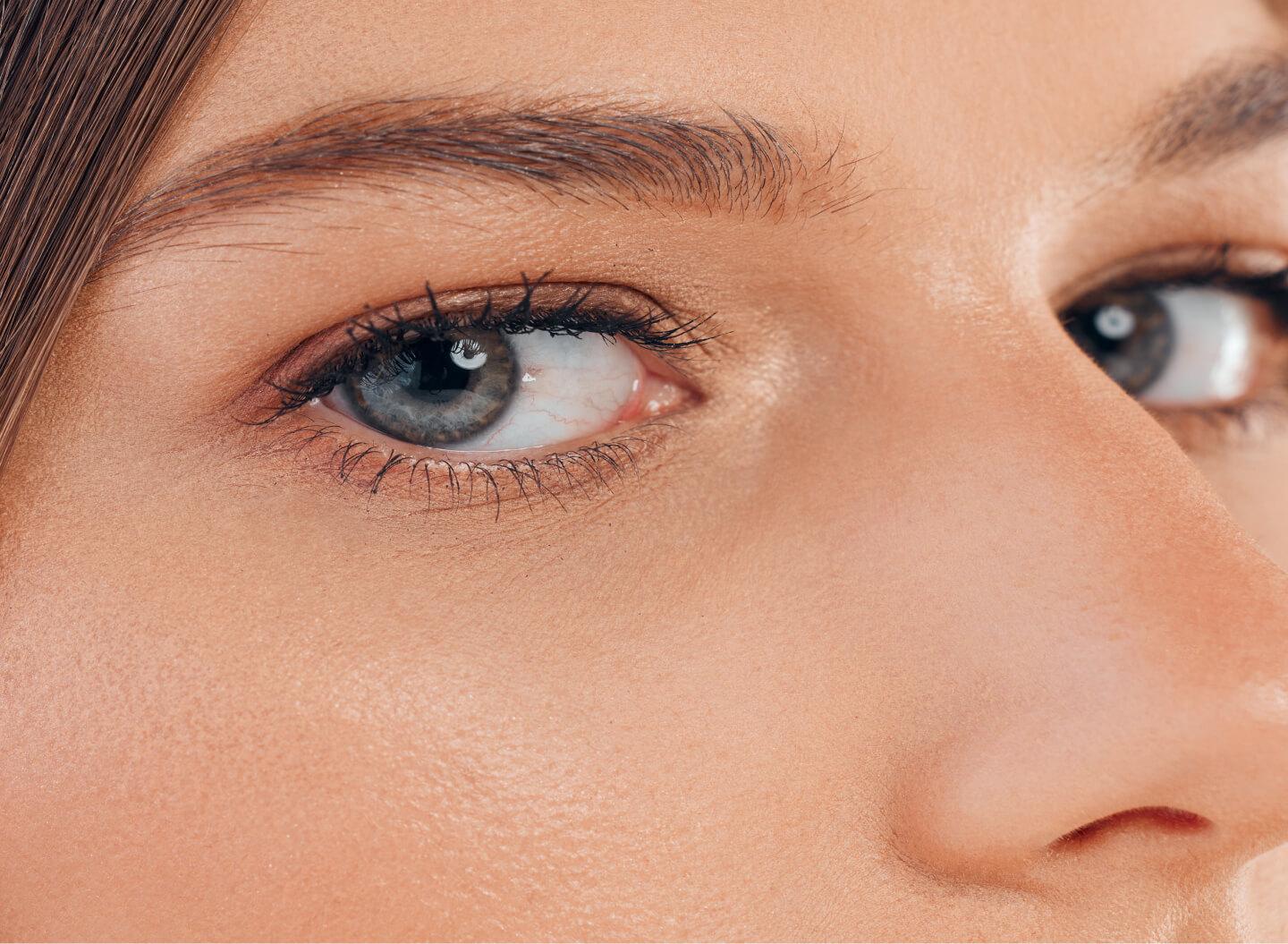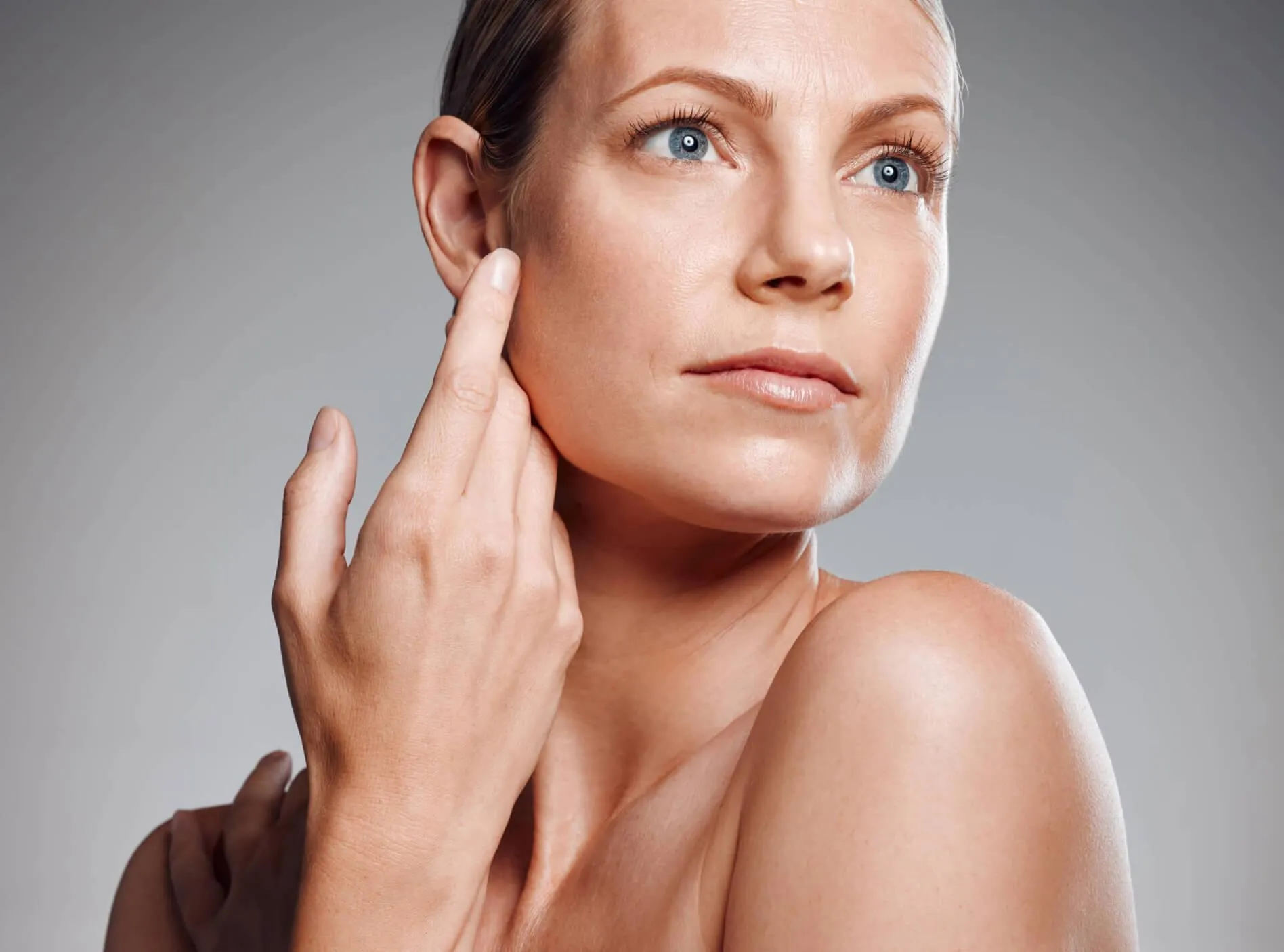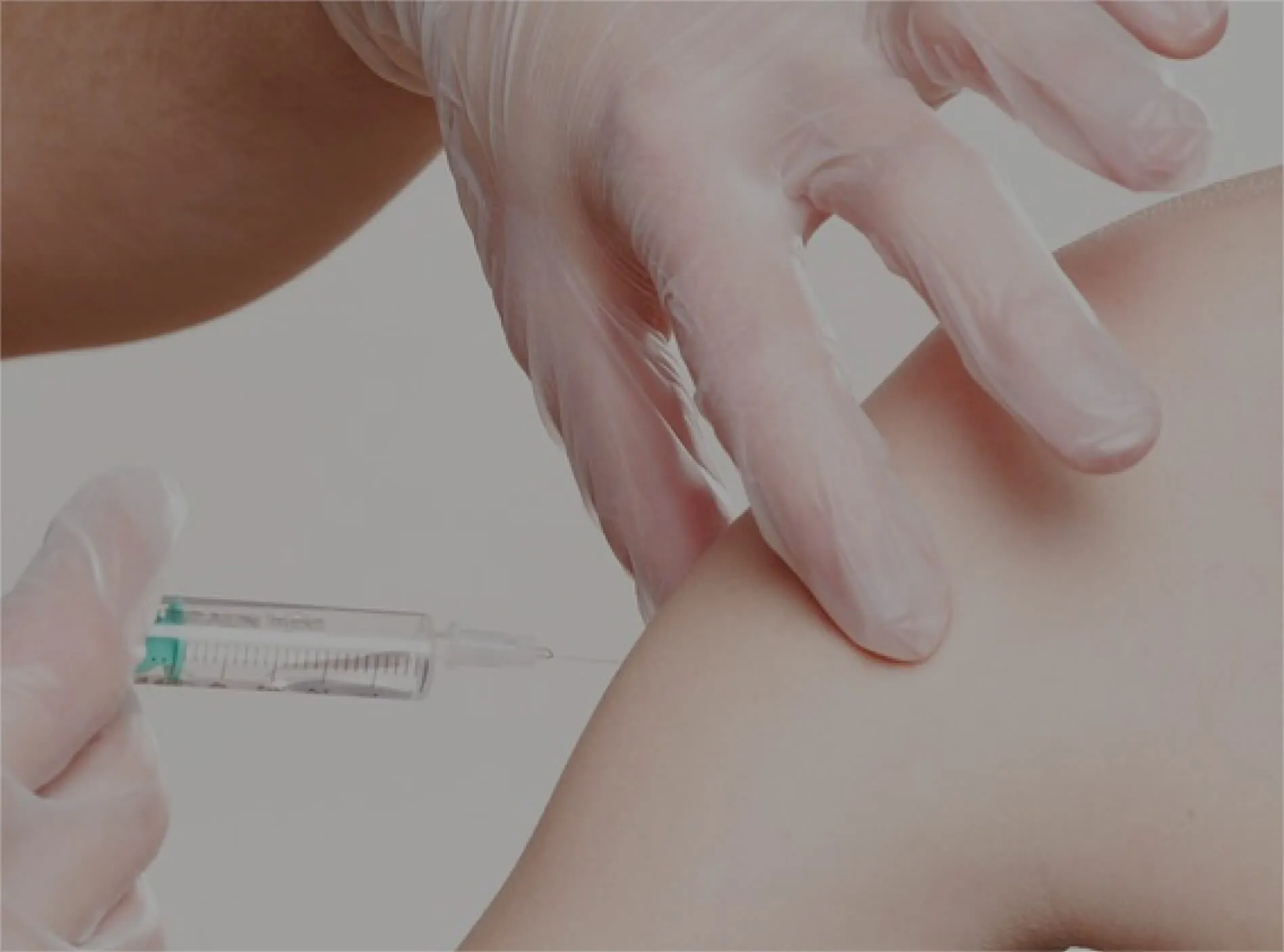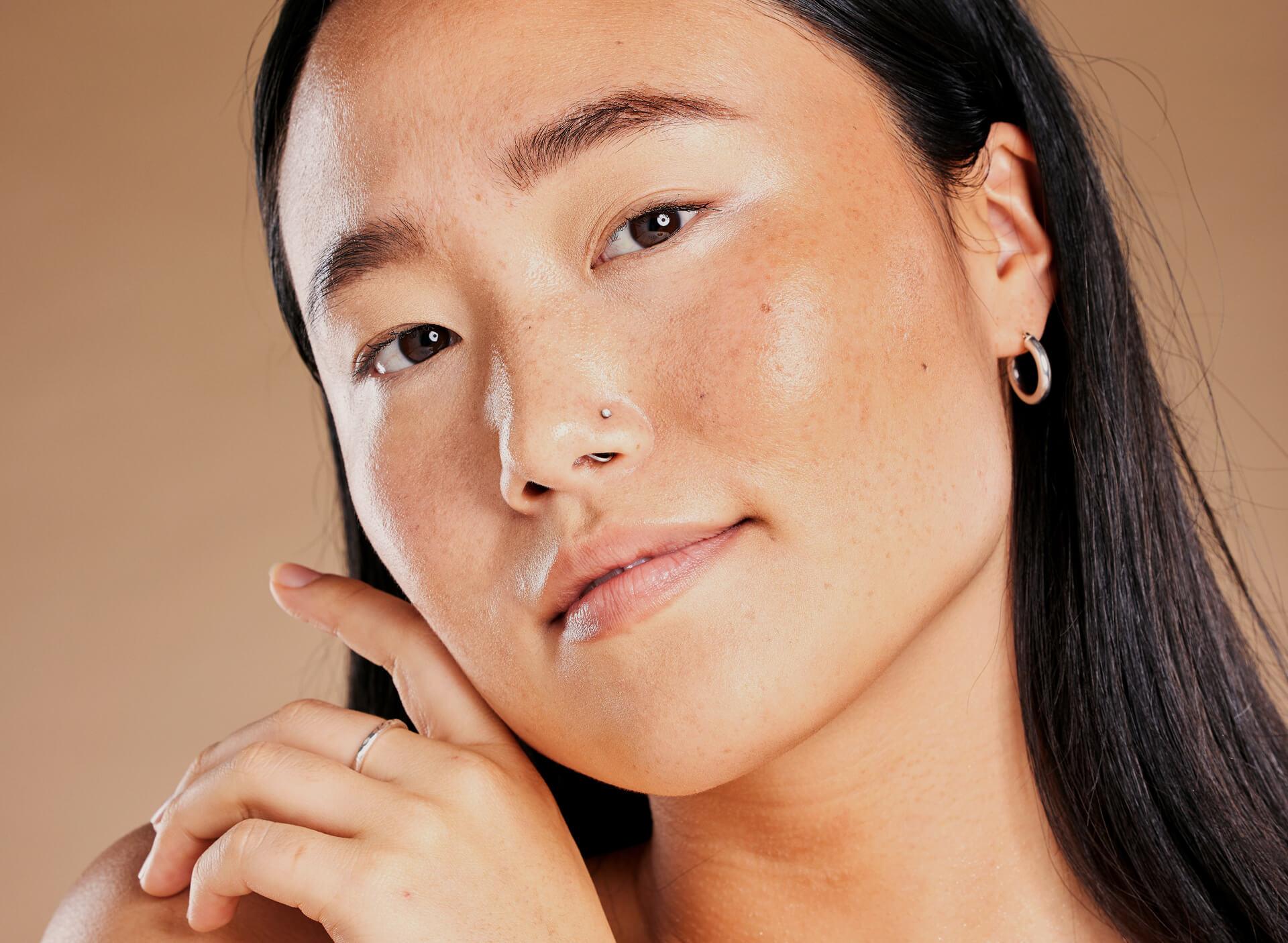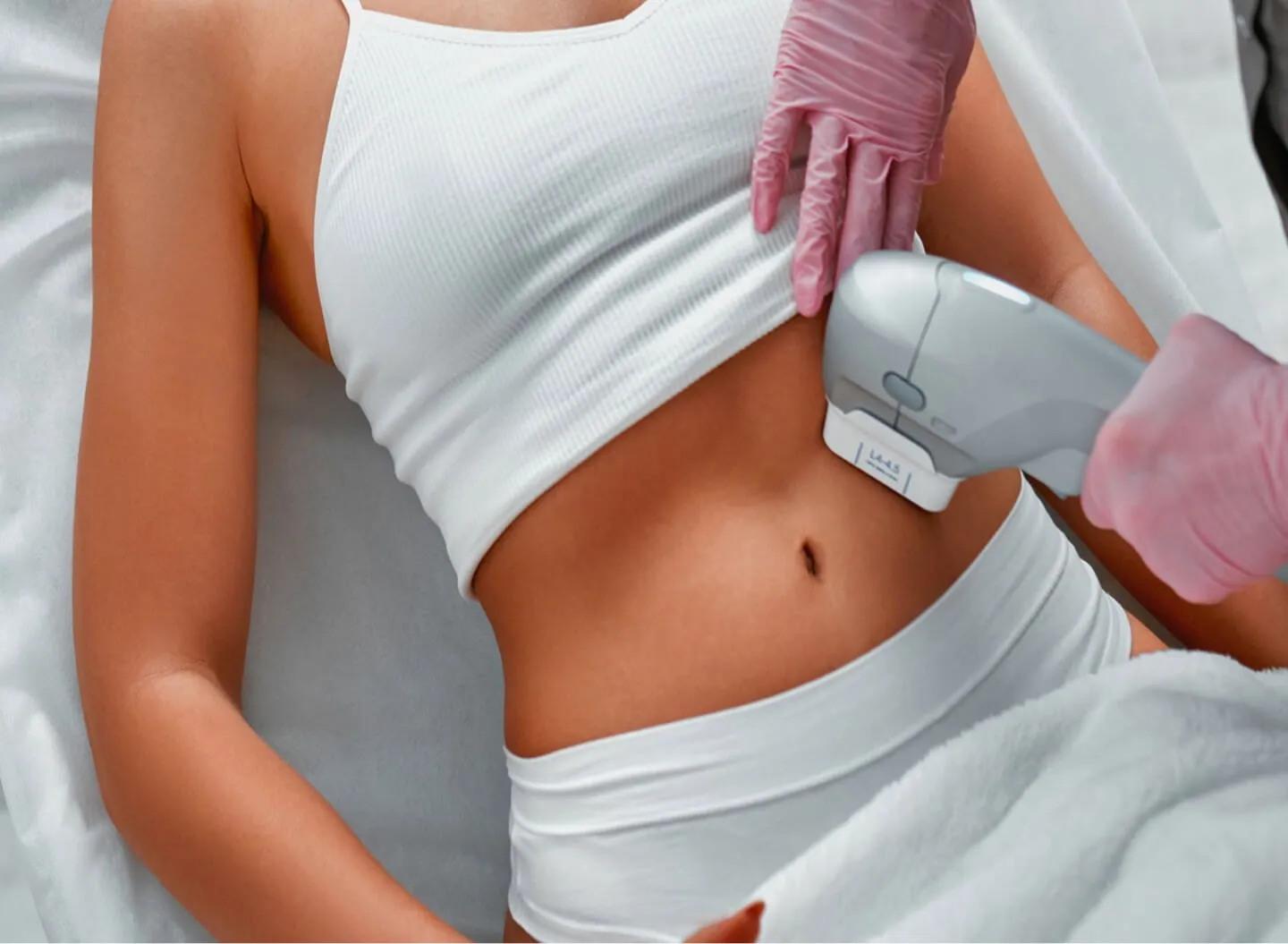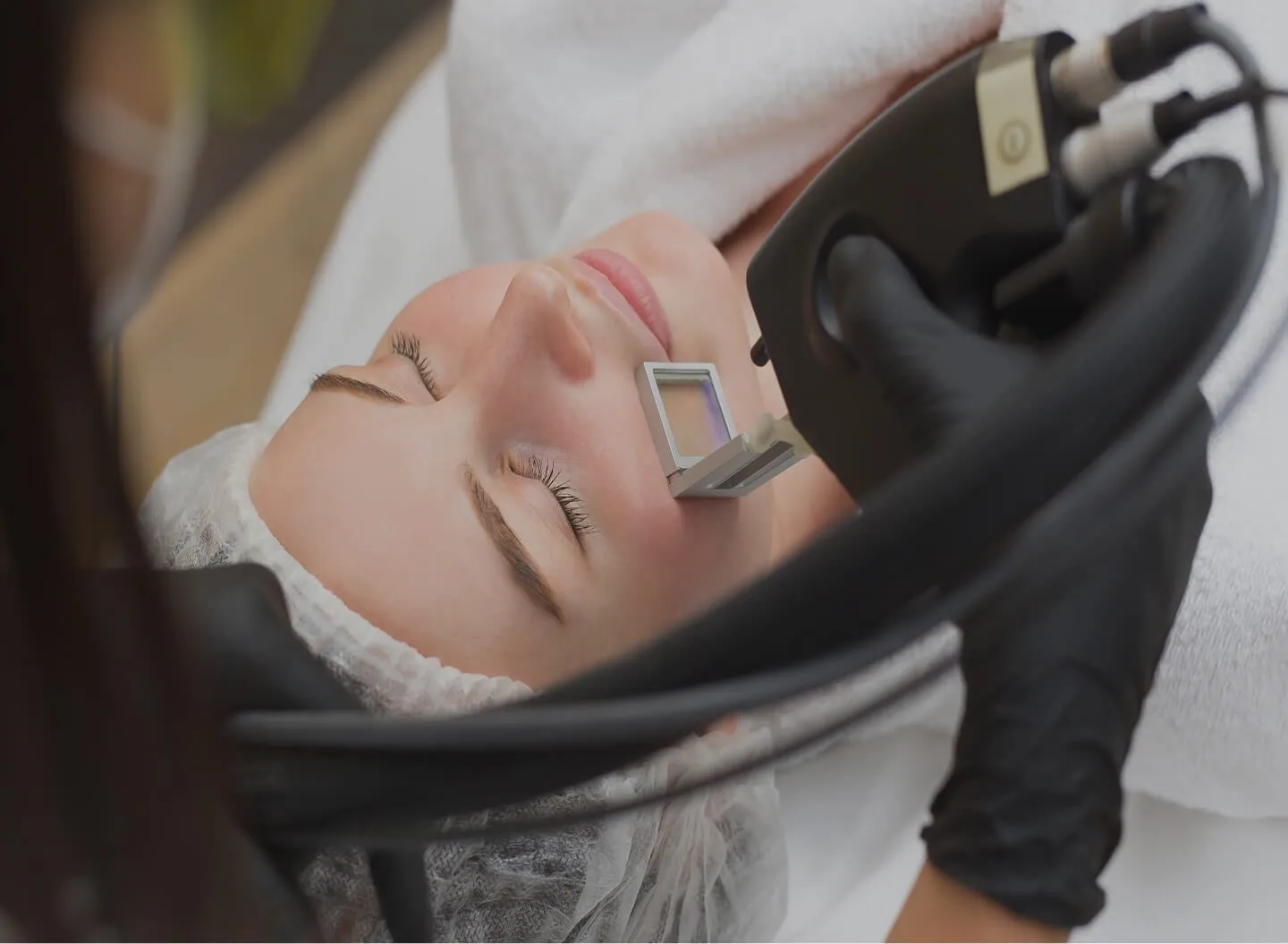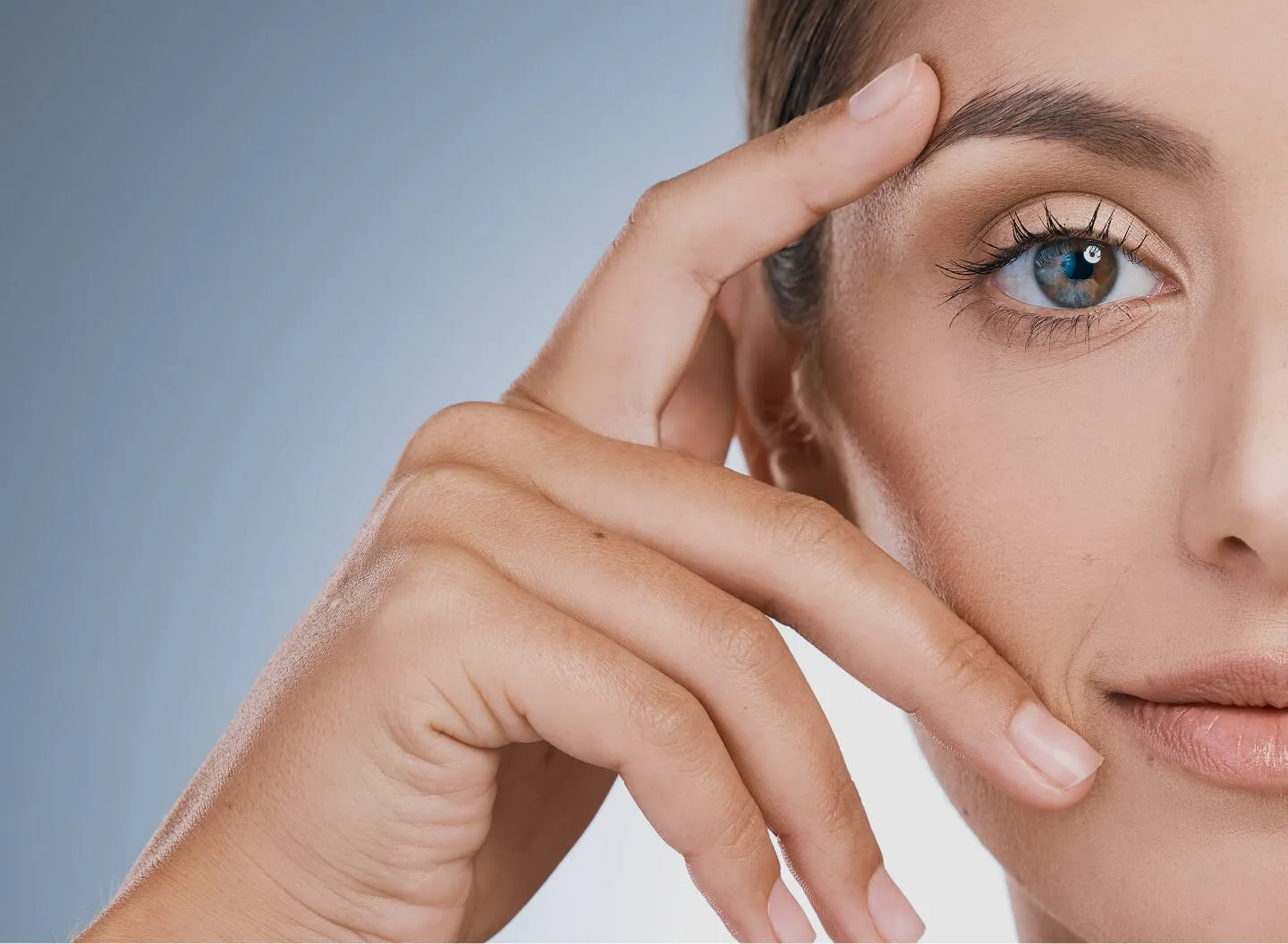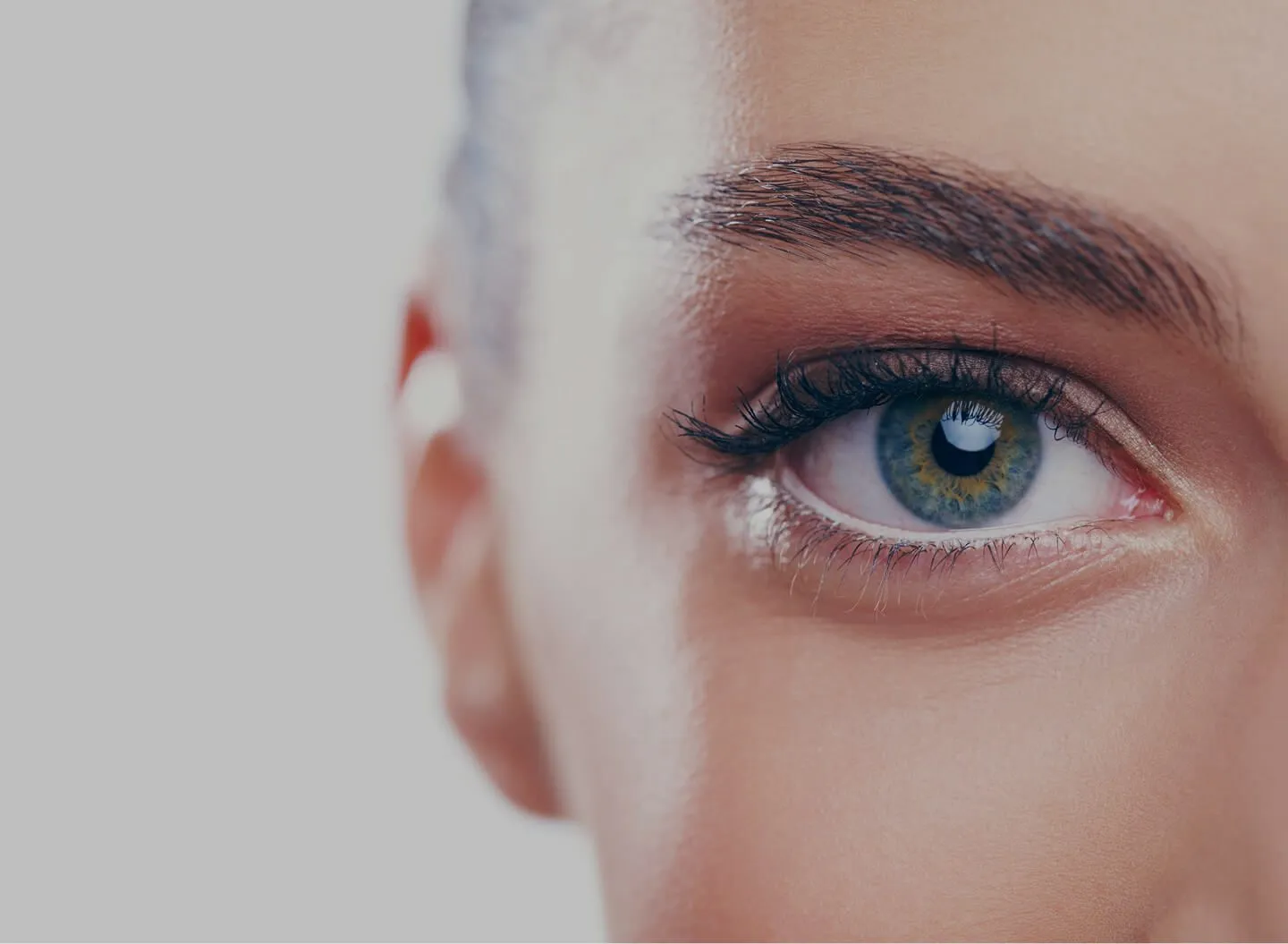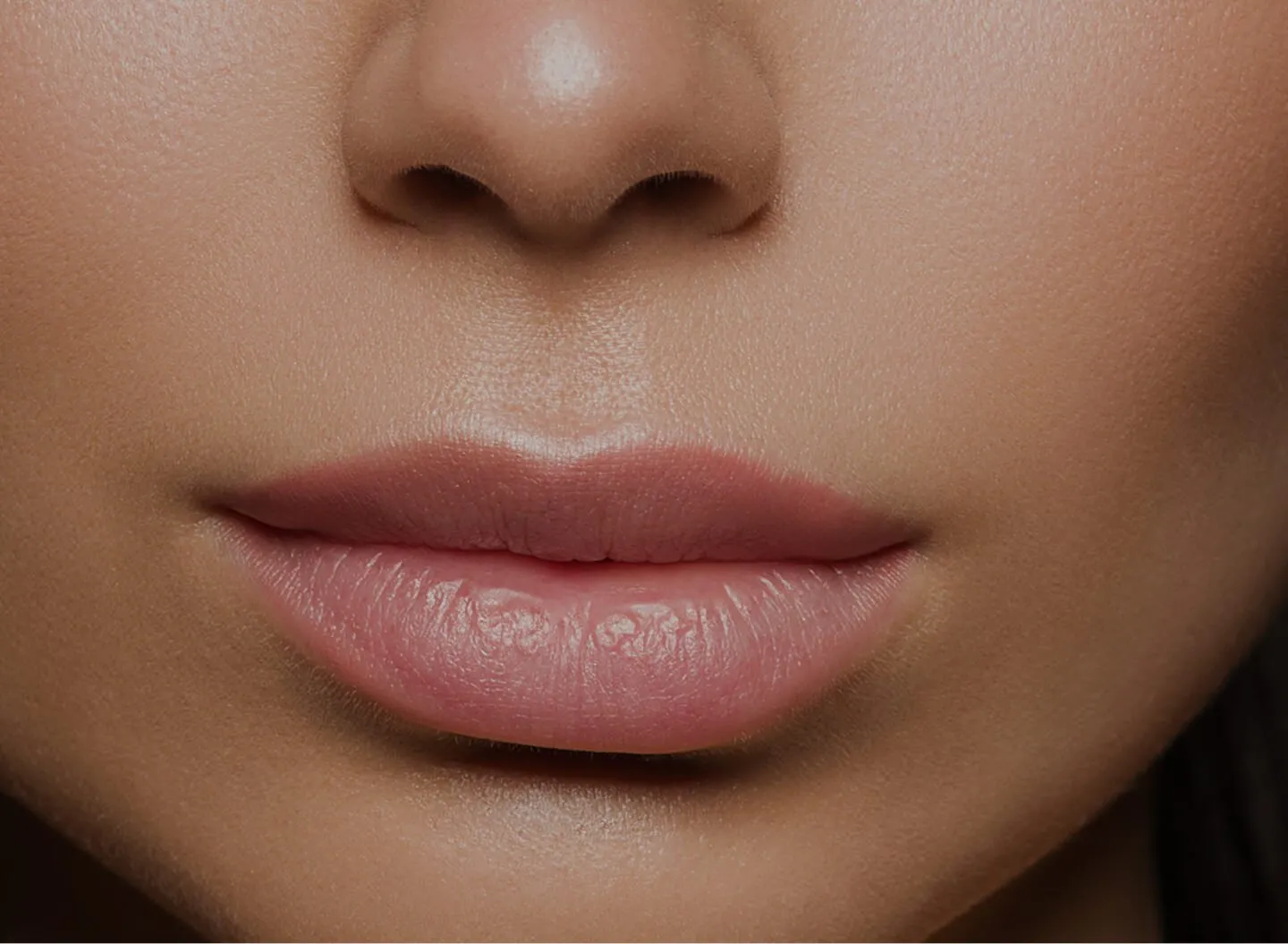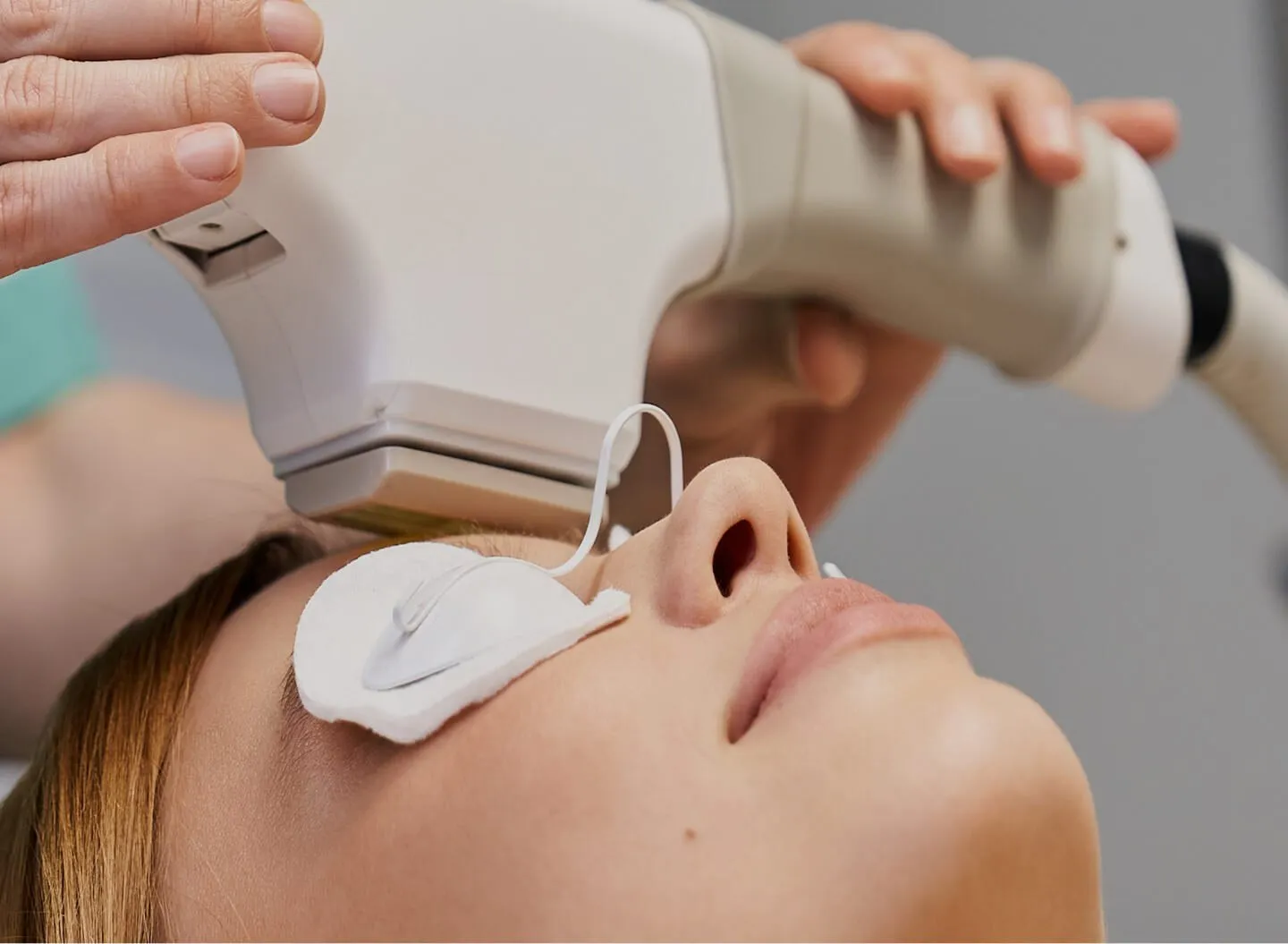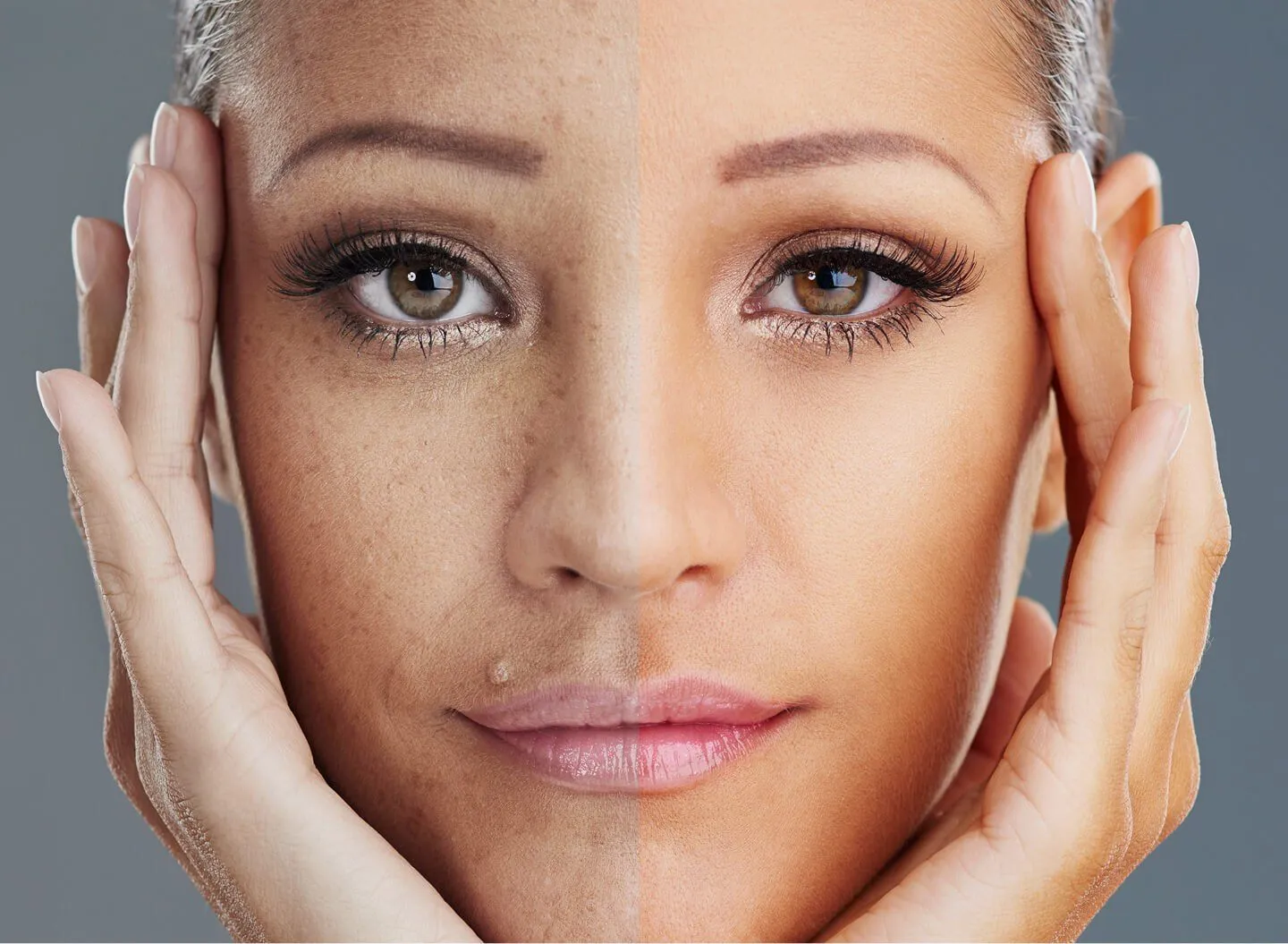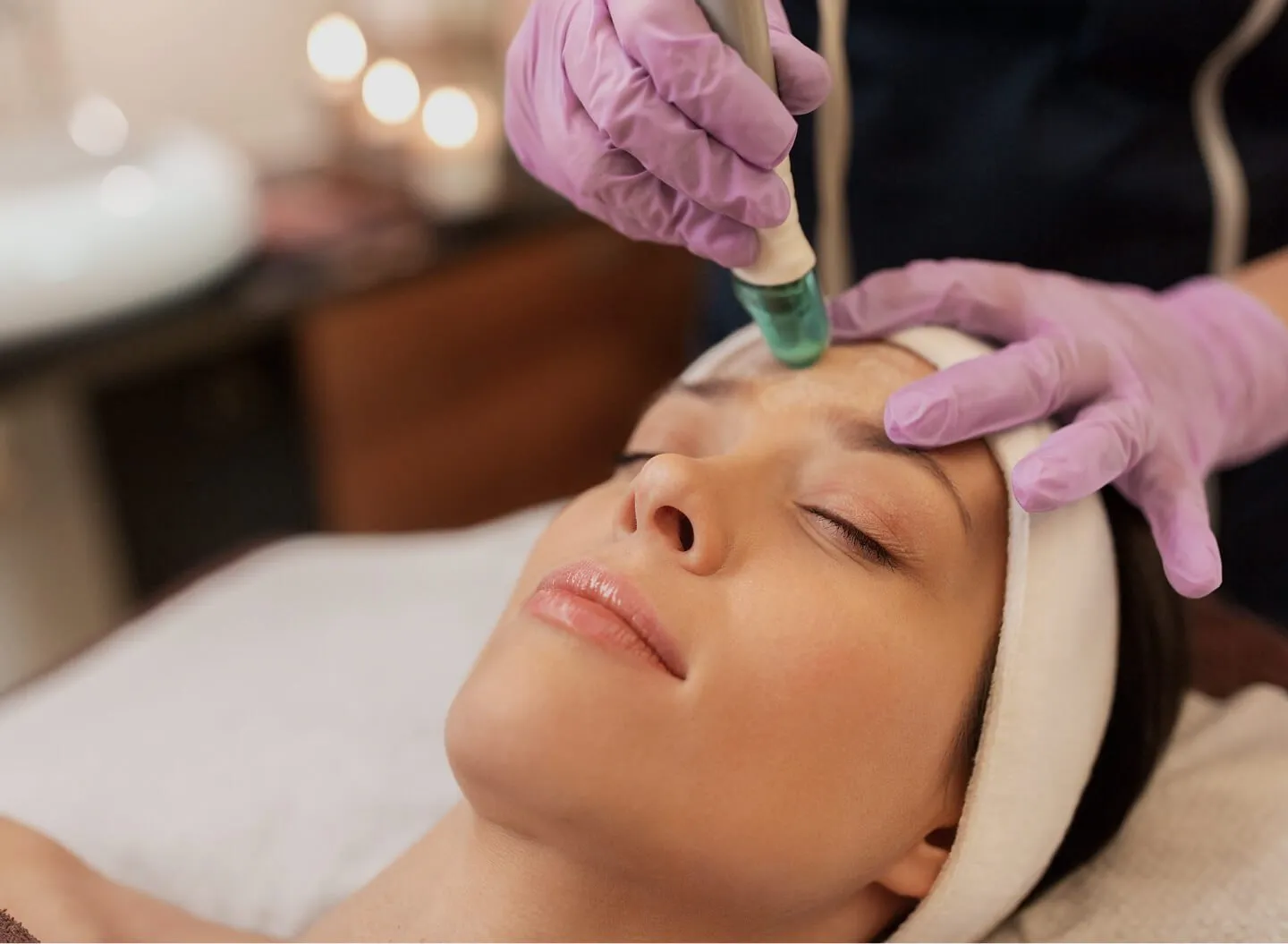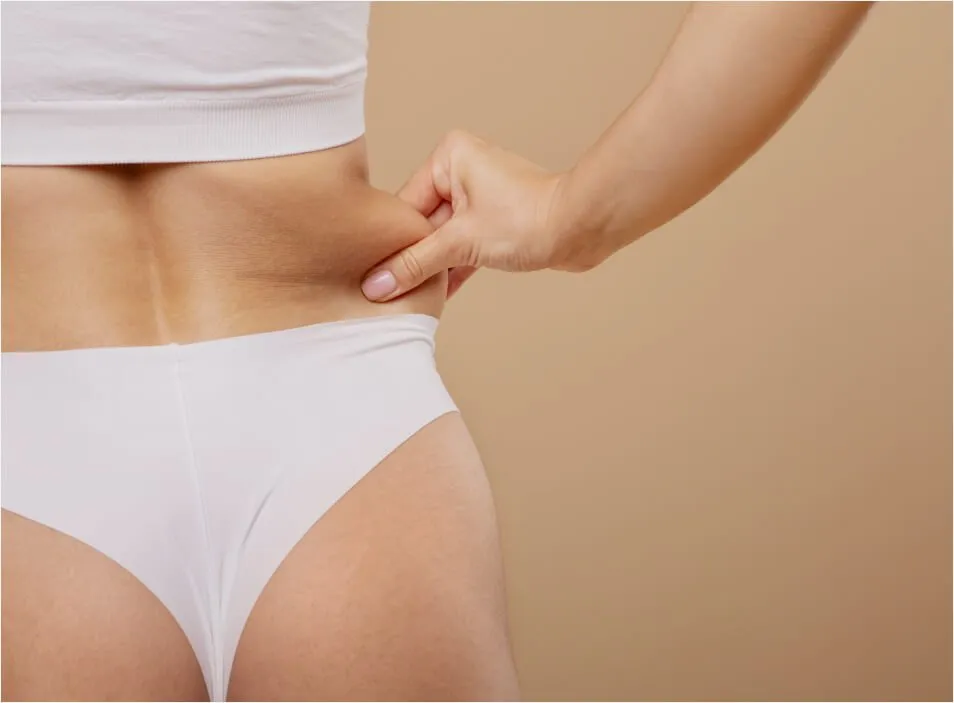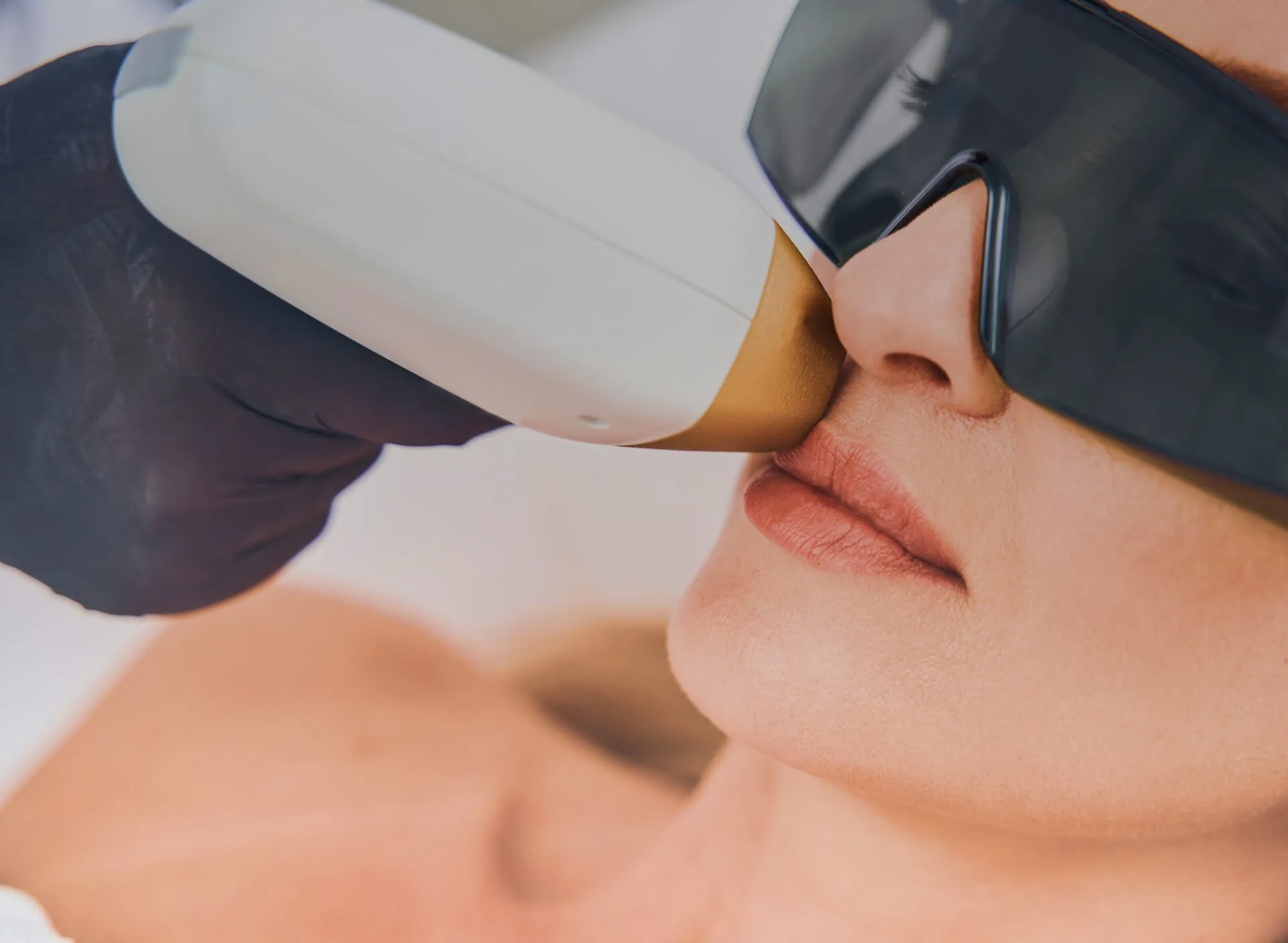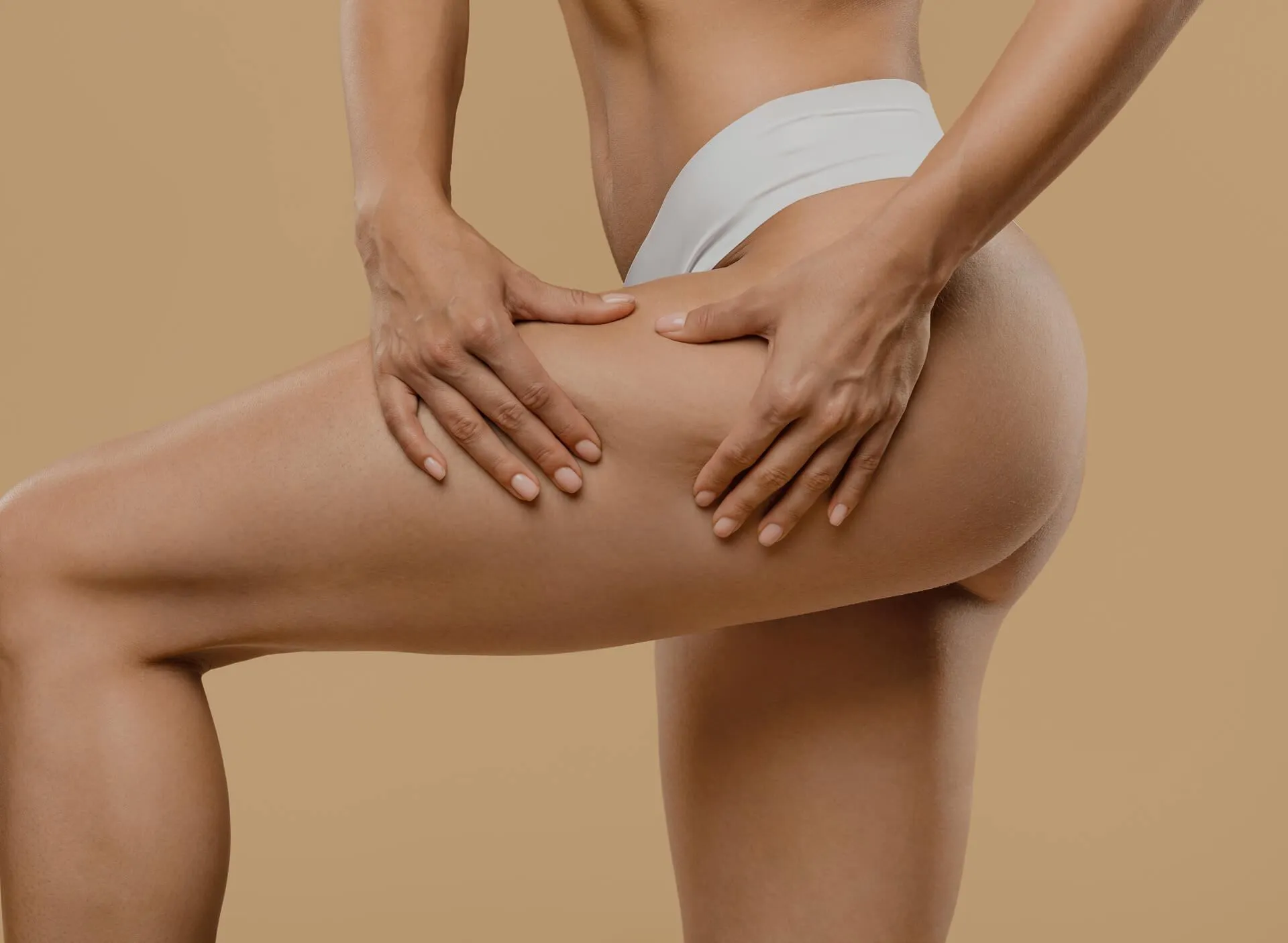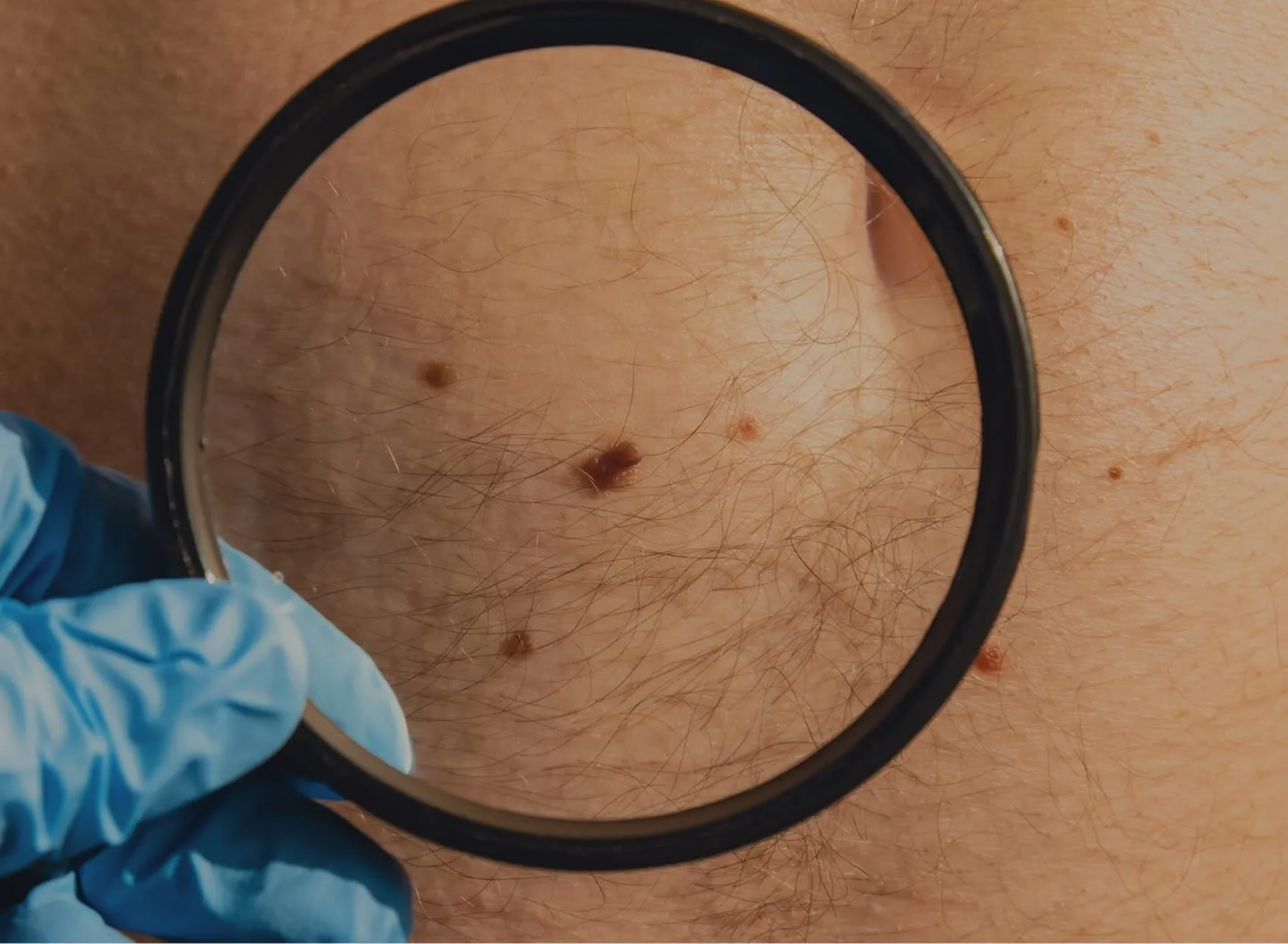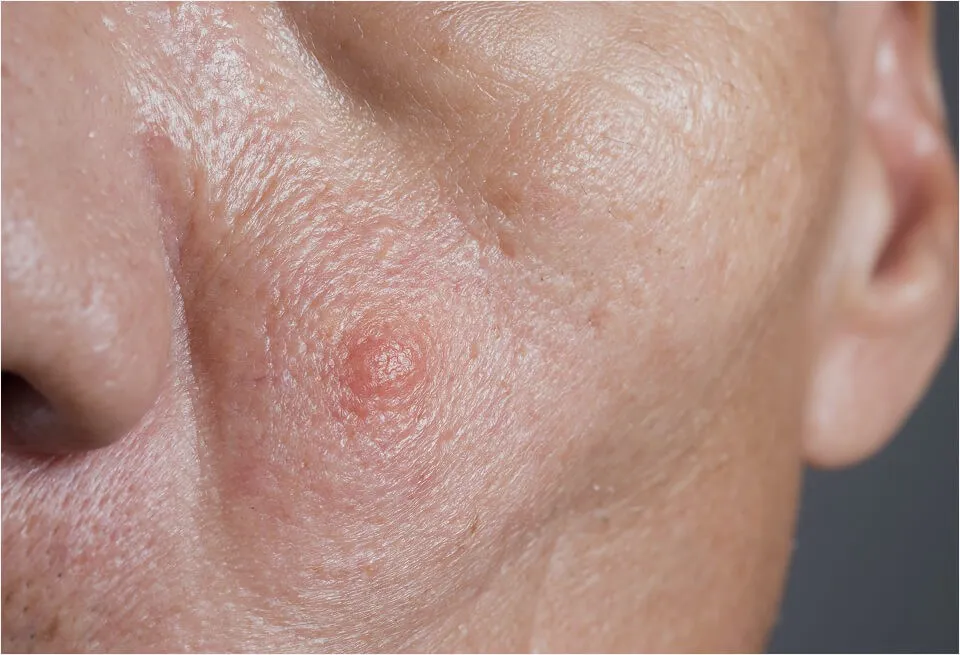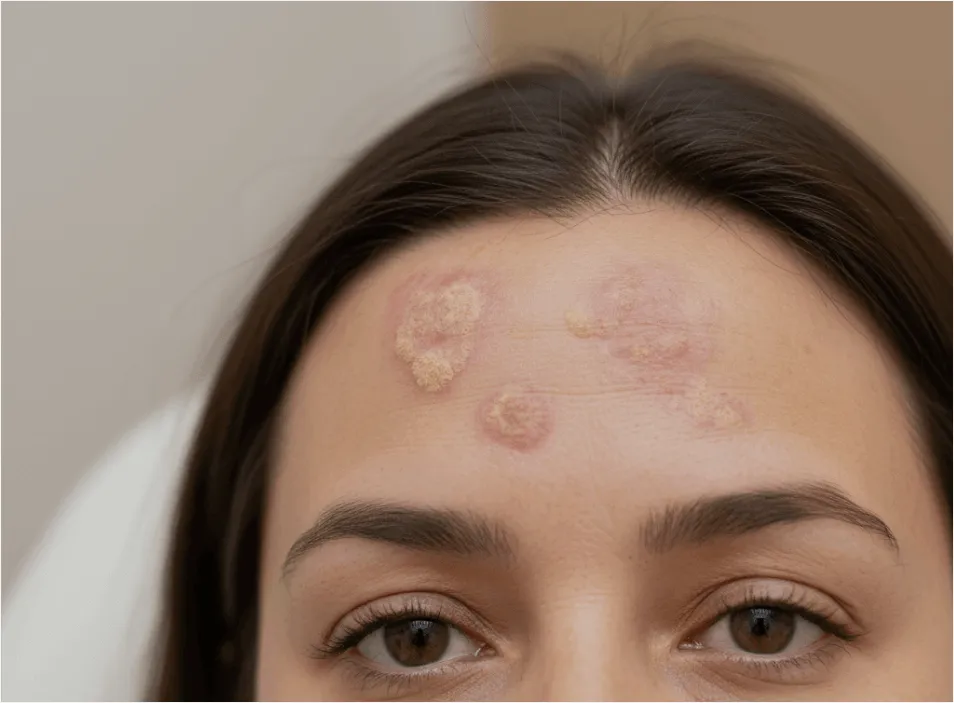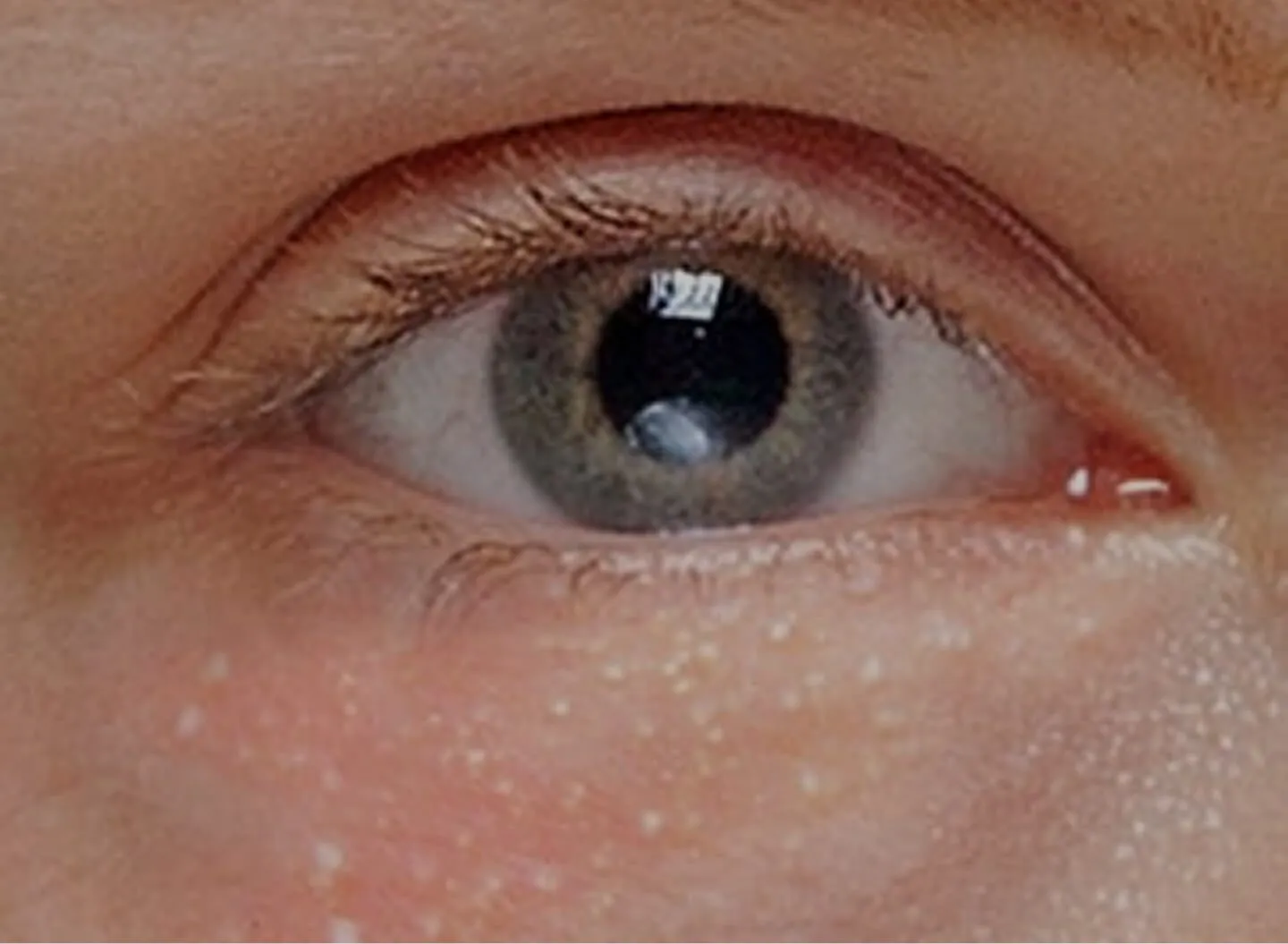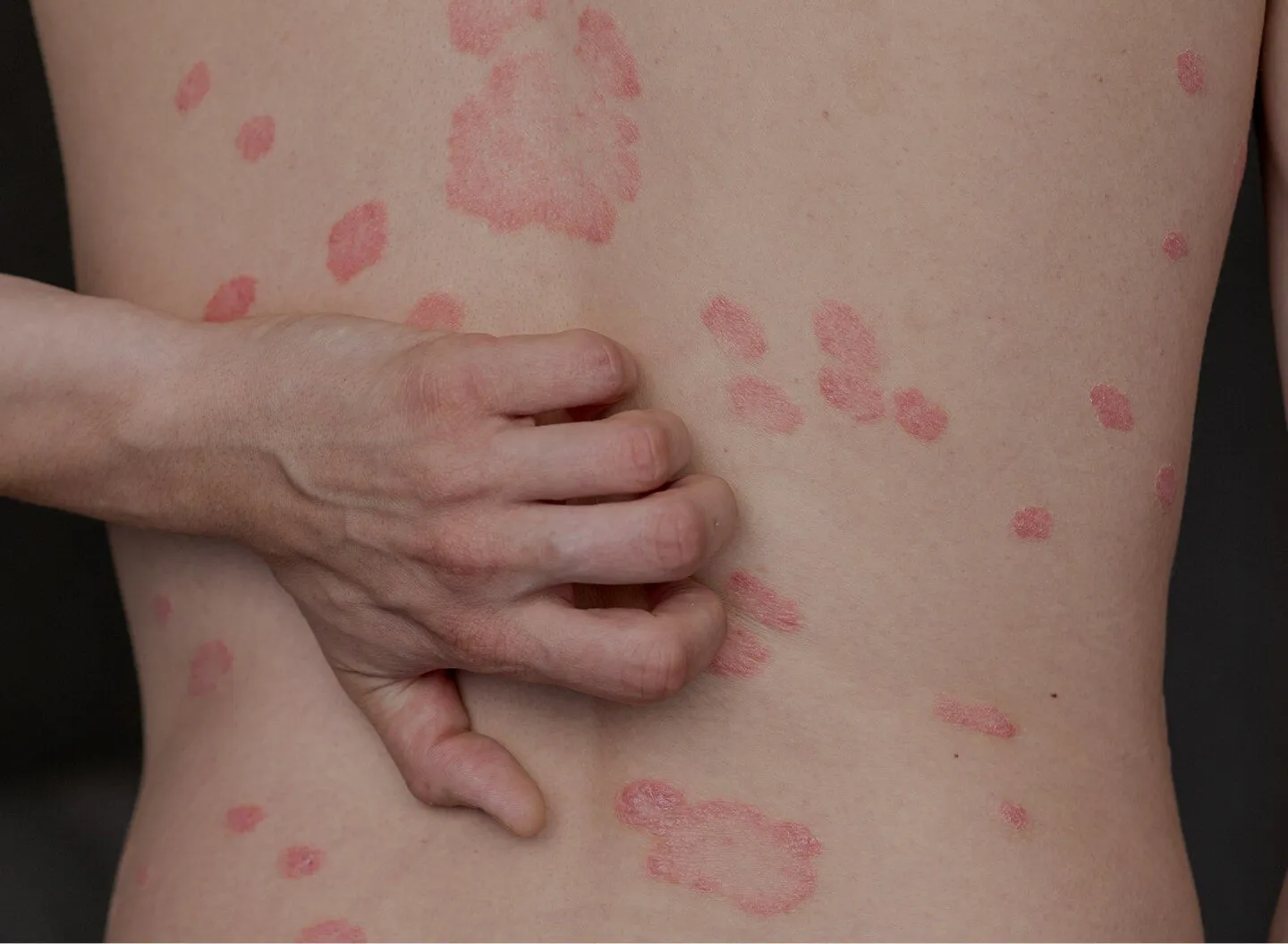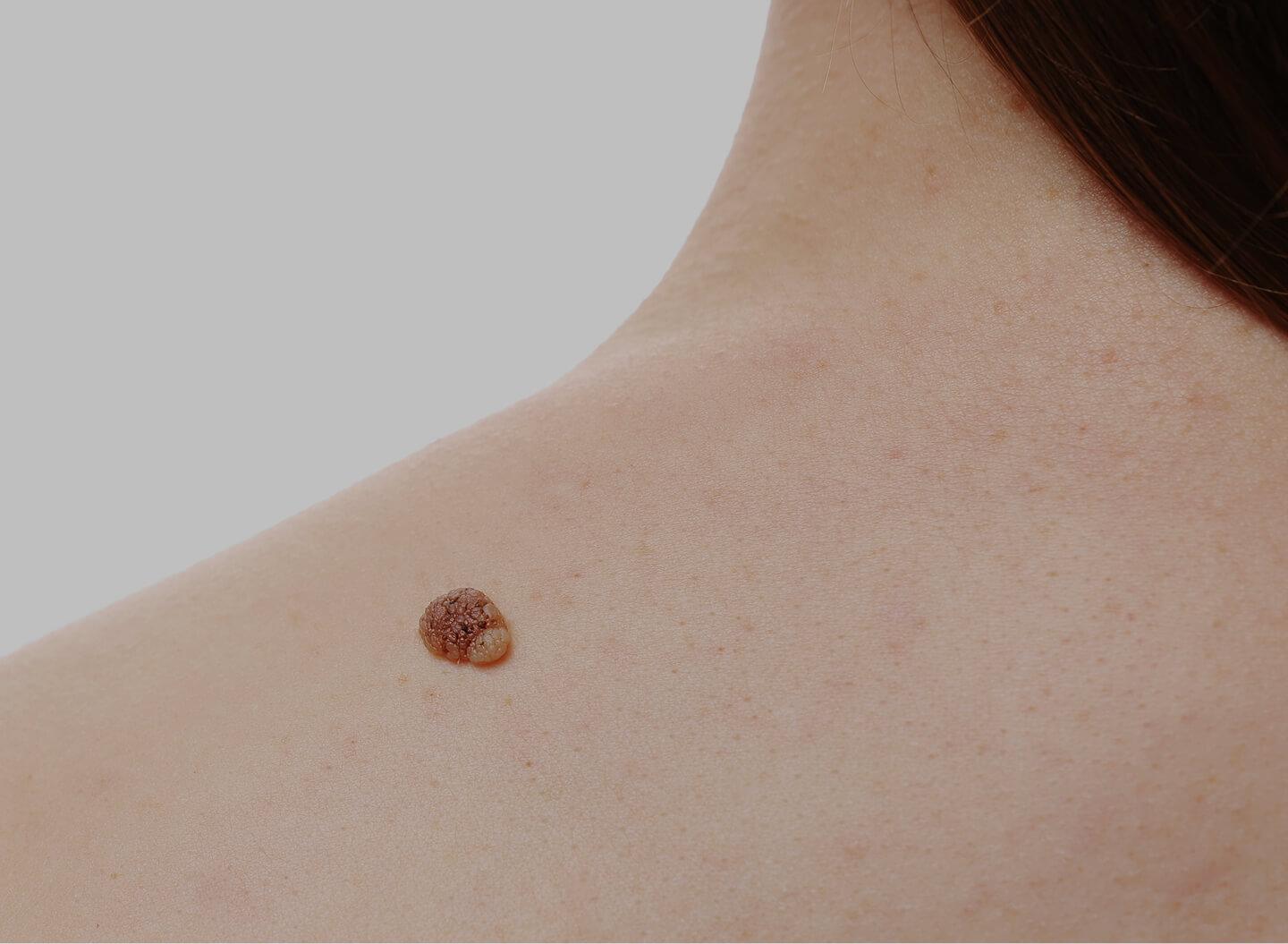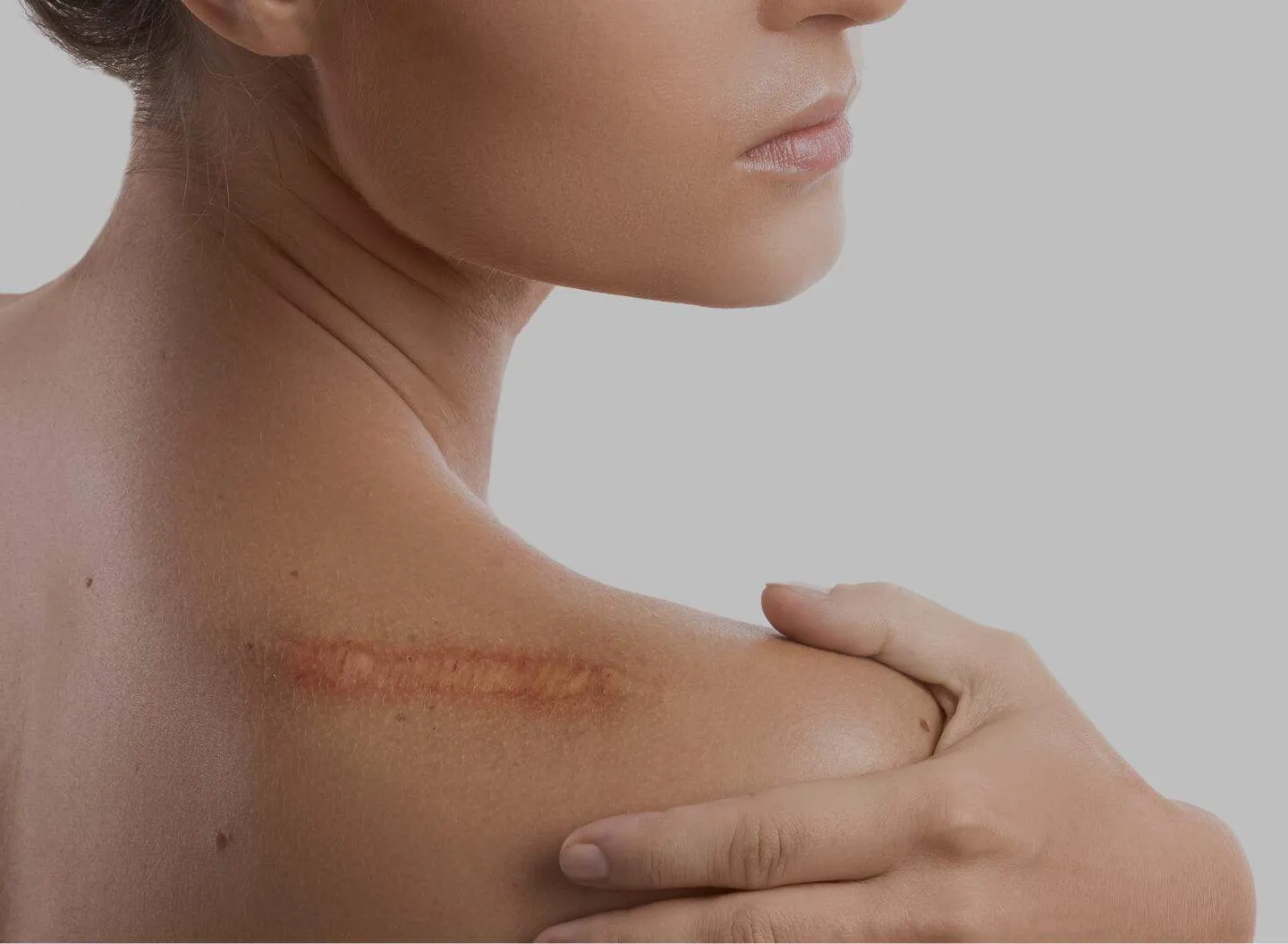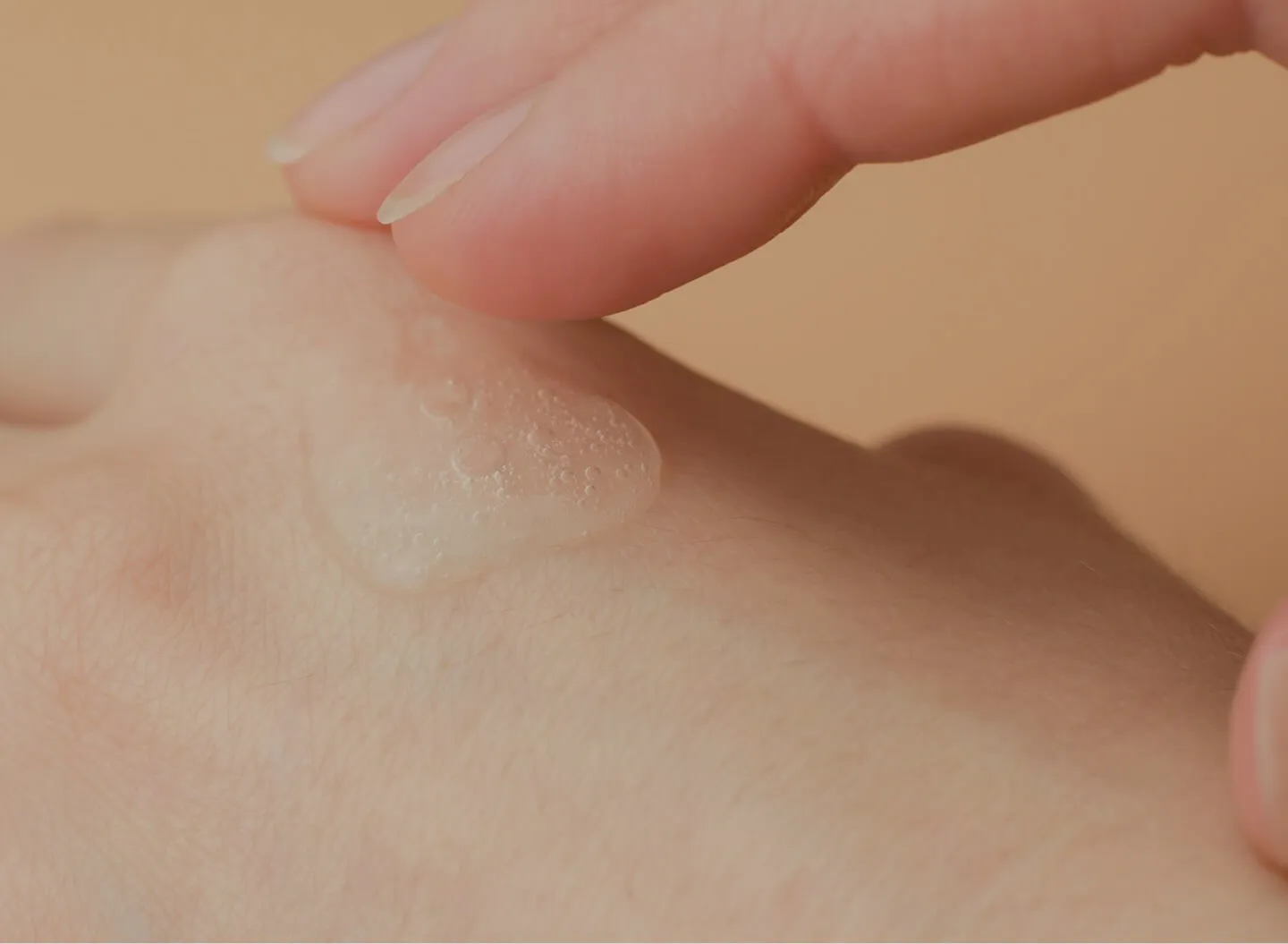
Laser Treatment Tattoo Removal
Tattoos often serve as personal expressions, capturing memories, beliefs, or significant life events. However, as time passes, what once felt meaningful may no longer align with your current identity or lifestyle. Whether you regret an old tattoo, need to remove faded or outdated ink, or wish to make space for a new design, tattoo removal by laser offers the most advanced and reliable method for safely eliminating unwanted body art.
-
Treatment PricingTattoo Removalfrom £80
We can offer you a very high level of success. All consultations are free so you have nothing to lose by coming in for a chat
-
Learn more about
At rtwskin, our cutting-edge clinic in Tunbridge Wells (Kent) and London specialises in tattoo laser removal, utilising industry-leading technology to break down ink pigments while preserving the surrounding skin’s integrity. Unlike older removal techniques, which often caused scarring or uneven fading, our state-of-the-art laser treatments gradually erase tattoos, restoring a natural, blemish-free appearance.
The Science Behind Tattoo Laser Removal
Tattoo ink sits deep within the dermis, making removal a precise and intricate process. Our advanced laser technology delivers controlled pulses of high-energy light, which fragment the pigment into tiny particles. Over time, the body’s natural immune system flushes out these particles, leading to a gradual fading of the tattoo.
At rtwskin, we use Q-switched laser technology, incorporating multiple wavelengths such as Nd:YAG, KTP, and Ruby Q-Switched Lasers. This allows us to effectively target a broad spectrum of ink colours, ensuring optimal results for both monochrome and multi-coloured tattoos.
For those seeking laser removal tattoo near me, our expert-led treatments provide a clinically proven, non-invasive solution with visible results after each session.
Do you remember the children’s song? Red and yellow and pink and green; purple and orange and blue, I can sing a rainbow, sing a rainbow?
Well, I can remove all of the colours of the rainbow too.Hi, my name is John Sheffield. I spent my youth in the 1960s in the Royal Navy serving for
12 years, mainly in the Submarine Service. All my pals were having tattoos so I decided to have some too – seemed like a good idea at the time! Very soon after however, I realised I had made a big mistake. I was stuck with them for many years, trying to hide my tattoos as I developed my businesses and got to the point where I really hated them. In 2006 when my wife and I started rtwskin; I decided to rid myself of the tattoos and become knowledgeable and skilled in the use of Q-Switched Laser’s and tattoo removal.Since then, I have removed hundreds of tattoos and trained many people from all over the world in the use of the Q-Switched Laser.My Laser is one of the most effective and powerful multi Laser, Q switched systems in the world. The Quanta Q-Plus, incorporates three devices in one case and is the most effective and powerful Laser available. Nd.YAG, KTP and Ruby provide the wavelengths you must have, without all of these in a very powerful Laser, parts of your multi-colour tattoo will remain.
What many people do not understand is that, without the power availability and the wavelengths vital for treating a tattoo effectively, your tattoo will look a lot worse after you have had treatment than before. Many tattoo artists and beauty clinics have purchased a “so called” Laser from China. None of them have the necessary power or the correct wavelengths to do very much more than make your tattoo look like a dirty smudge on your body. Lasers from China can be bought for $5,000. The cost of my Laser was £68,000 plus VAT. It is the result of decades of research and development by one of the largest medical Laser manufactures in the world. They even currently have lasers being used on the Vatican, probably not to remove tattoos of course. Which one would you prefer to use on your tattoo?Surgery is the only other option for tattoo removal but it is expensive and will leave scars. The Q Switched Laser has been developed specifically for tattoo removal and can effectively remove all colours of tattoo pigment. The best one is available here at rtwskin.
Earlier methods, such as acid tattooing or dermabrasion will scar you and be ineffective. The Q Switched Laser breaks up the tattoo ink into tiny fragments, which are then cleared away by your immune system. In the hands of a properly trained and experienced clinician this has a very low risk of scarring or damage to the surrounding tissue.
What Determines the Price for Tattoo Removal UK?
-
The tattoo laser removal cost depends on multiple factors, including:
-
Tattoo Size – Larger designs require longer treatment sessions and multiple appointments for complete removal.
-
Ink Colour & Depth – Darker shades like black and blue tend to break down more easily, whereas lighter hues such as green, red, and yellow often need additional treatments due to their complex pigments.
-
Skin Type & Location – Tattoos positioned in areas with strong blood circulation, such as the chest or arms, fade more quickly than those on extremities like the hands, feet, or ankles.
-
Age of the Tattoo – Older tattoos generally respond better to laser removal, as the ink has naturally begun to degrade over time.
-
Professional vs. Amateur Ink – Professional tattoos are typically more deeply embedded and may require more sessions than amateur tattoos, which often contain uneven pigment distribution.
-
Because every tattoo is different, a personalised consultation is crucial in estimating both the tattoo removal by laser pricing and the number of sessions needed for optimal results.
What Happens During Tattoo Removal Services?
- Comprehensive Consultation and laser test patch
Before proceeding with treatment, our specialists will conduct a full assessment of your tattoo, skin type, and medical background. A tattoo laser removal before and after patch test may be performed to evaluate how your skin responds to the laser.
- The Tattoo Removal Procedure
- A cooling gel is applied to ensure comfort during the session.
- Short bursts of high-energy laser light target and fragment the ink particles.
- Each session lasts between 15 and 45 minutes, depending on the tattoo’s size and complexity.
- Post-Treatment Care
- Expect mild redness, swelling, or slight blistering for a few days.
- Apply prescribed ointments and keep the area hydrated.
- Avoid sun exposure and always use SPF 50+ on treated areas.
- Follow recommended healing intervals between sessions for best fading results.
What to Expect During a Laser Test Patch
The test patch is a quick procedure where a small section of your tattoo is treated with the laser. You may experience mild redness or slight swelling, which typically subsides within a few hours to days. We will monitor your skin’s response over the following weeks to ensure safe and effective treatment.
At rtwskin, we are committed to providing expert laser tattoo removal with a focus on safety, comfort, and results. Book your consultation today and take the first step towards clear, ink-free skin!
If you are searching for tattoo removal London, rtwskin provides expert-led services with safe and predictable outcomes.

The Importance of a Laser Test Patch for Tattoo Removal
At rtwskin, your safety and the effectiveness of your treatment are our top priorities. Before starting laser tattoo removal, we always perform a laser test patch to ensure the best possible results and minimise any risks.
Why Is a Laser Test Patch Important?
-
Assessing Skin Sensitivity
Everyone’s skin reacts differently to laser treatments. A test patch allows us to evaluate how your skin responds, ensuring a safe and effective treatment plan tailored to you.
-
Checking for Adverse Reactions
While laser tattoo removal is a well-established procedure, some individuals may experience redness, swelling, blistering, or pigmentation changes. The test patch helps us identify any unusual reactions before full treatment begins.
-
Testing for Metal-Based Inks
Some tattoo inks contain metallic compounds, such as iron or titanium oxide, which can react differently to laser treatment. In rare cases, these inks can cause unexpected skin reactions or even heat up during treatment. A test patch helps us determine if your tattoo contains metal-based pigments and adjust the laser settings accordingly to ensure a safe and effective removal process.
If the test patch reveals that your tattoo contains titanium-based ink, we may not be able to safely proceed with the laser treatment. The reaction can cause significant complications, including damage to the skin, and it may not be possible to remove the tattoo safely with lasers.
-
Determining the Correct Laser Settings
Tattoo ink varies in colour, depth, and composition, requiring precise laser adjustments. The test patch helps us identify the optimal laser intensity and wavelength to effectively target the ink while protecting your skin.
-
Predicting Treatment Effectiveness
By performing a test patch, we can assess how well your tattoo will respond to treatment and provide a more accurate estimate of the number of sessions needed.
-
Ensuring Comfort and Tolerance
Laser tattoo removal involves some level of discomfort. A test patch allows you to experience the sensation in a small area first, so we can discuss pain management options if necessary.
Special Considerations for Eyebrow Tattoo Laser Removal
Cosmetic tattoos, such as semi-permanent eyebrow tattoos, require a different approach compared to standard body tattoos. Pigments used in permanent makeup often contain iron oxide or titanium dioxide, which can react differently to laser treatment. At rtwskin, we use specialised laser settings to ensure safe and effective eyebrow tattoo laser removal, preventing unwanted colour changes or scarring.

Possible Side Effects After Laser Tattoo Removal
At rtwskin, we use advanced laser technology for safe and effective tattoo removal. While side effects are typically mild, it’s important to be aware of potential reactions to the treatment.
Common Side Effects:
- Redness and Swelling: Mild redness and swelling, usually subsiding within a few hours to a couple of days.
- Blistering: Small blisters may form, typically healing within a week (avoid popping them to prevent infection).
- Scabbing and Crusting: Scabs or crusts may form as the skin heals; do not pick at them.
- Itching: Common during healing; moisturisers like aloe vera gel can help soothe the area.
- Temporary Skin Lightening or Darkening (Hypopigmentation or Hyperpigmentation): Skin tone may change temporarily, usually returning to normal over time.
- Bruising: Bruising can occur, especially in sensitive areas, fading within a few days.
Less Common but Possible Side Effects:
- Scarring: Rare but can occur if aftercare instructions are not followed, especially by picking at scabs.
- Infection: If the treated area is not kept clean, infection can develop. Signs include excessive redness, warmth, pus, or increasing pain.
- Allergic Reactions: Some tattoo inks, particularly metal-based pigments, may cause allergic reactions during removal. A test patch helps assess this risk.
Aftercare for Laser Tattoo Removal
- Proper aftercare is essential to ensure the best results and minimise the risk of side effects after your laser tattoo removal treatment. At rtwskin, we guide you through the healing process to ensure your skin recovers safely and effectively.
- Immediately After Treatment
- Cool Compress: Apply a cool compress to the treated area to reduce any swelling or discomfort.
- Aloe Vera: Use pure aloe vera gel to soothe the treated area. Aloe vera has natural healing properties and helps calm irritation and redness.
First Few Days
-
Keep the Area Clean: Gently wash the treated area with mild, fragrance-free soap and lukewarm water. Pat the area dry with a clean towel (do not rub).
-
Avoid Scratching or Picking: Do not pick at any scabs, blisters, or crusts that form, as this can cause scarring or infection.
-
Moisturise: Apply a fragrance-free moisturiser or aloe vera gel to keep the area hydrated.
-
Avoid Sun Exposure: Protect the treated area from direct sunlight. Apply a high-SPF sunscreen (at least SPF 50) to the area if you must be outdoors. Avoid tanning beds.
-
Wear Loose Clothing: If the tattoo is in a sensitive area, wear loose clothing to avoid irritation.
First 2 Weeks
- Avoid Hot Water: Do not immerse the treated area in hot tubs, pools, or the ocean. Avoid long, hot showers.
- No Intense Exercise: Avoid activities that cause excessive sweating or friction on the treated area.
- Monitor for Infection: Keep an eye out for any signs of infection, such as increasing redness, warmth, pus, or excessive pain. Contact us if you notice any of these symptoms.
Ongoing Care
- Continue to Moisturise: Keep the treated area hydrated throughout the healing process.
- Avoid Direct Sun Exposure: For the best long-term results, protect the area from sun exposure until it’s fully healed.
- Stay Hydrated and Eat Well: Proper hydration and a balanced diet help support skin healing.
When to Contact Us
If you experience severe discomfort, increased redness, signs of infection, or unusual reactions that concern you, please contact us immediately. We are always here to help and ensure your recovery goes smoothly.
By following these aftercare instructions, you’ll support your skin’s natural healing process and achieve the best possible results from your laser tattoo removal treatment.
At rtwskin, we prioritise your safety throughout the tattoo removal process. Our team is here to support you every step of the way!

I have been a client of RTWSKIN for quite some time, and my mom even travels from France to see Nina. She would not consider seeing anyone else but Nina. Whether it’s Botox, dermal filler, or laser skin resurfacing, we have both had numerous treatments with Nina, always leaving the clinic highly satisfied. The entire staff at RTW Skin is exceptionally professional and friendly. Thank you, Nina…
-Laetitia
treatment in action Tattoo Removal
Video
Learn more about Tattoo Removal treatment
We’ve got you covered, as we have finance options available for people with varying circumstances. rtwskin believes that you shouldn’t have to pinch your pockets to be able to purchase our products. You can pay in affordable monthly instalments to better suit your needs and budget.
To help you purchase from rtwskin, we have partnered with Kandoo, a regulated credit broker to offer all our customers a range of highly flexible finance options. Kandoo is a comparison service that searches to find you the best Personal Loan option that’s right for you.

Frequently Asked Questions
What to expect after Laser treatment?
The majority of our patients feel mild skin irritation and itching after tattoo removal treatment. This can last 1-3 days following each session. We advise the use of Aloe Vera gel or Antiseptic Cream to speed up the healing. Some patients experience swelling, redness, pin point bleeding, blistering and temporary skin darkening. These side effects are common and usually subside within 1-2 weeks.
Blistering is common, and it can be quite severe. Most patients will experience some blisters and/or light bleeding during the course of Laser tattoo removal treatment and this should be accepted as completely normal. In fact, if you do not see even a small blister during the course of treatment you are not being treated at high enough power or the Laser is not capable of delivering the required power levels. Consequently, the course will last much longer and cost far more than it needs to. Blistering is superficial and does not usually have any harmful or permanent consequences.
The most common complication following Laser tattoo removal is a reactive increase or decrease in skin pigment resulting in lightening or darkening of the skin in the affected area. This decreased or increased pigmentation, which is more likely to happen in Asian people or those who tan easily, usually lasts a relatively short time (usually 6 or 12 months) before it disappears naturally but you must be aware, sometimes it will become permanent.
Keloid and other forms of scarring are rare but nevertheless they are a risk that you must understand and accept prior to treatment commencing
Can I remove only part of my tattoo?
Yes, Laser is very precise and accurate and can erase a very small portion of your tattoo.
Is it easier to remove old tattoos than new one?
Yes, Laser breaks down older tattoo ink much easier then fresh ink.
What colour tattoo ink is easy to remove?
Black or dark blue tattoos are the easiest to remove and will require fewer sessions than tattoos of other colours or a mixture of different colours.
Green, purple, white, light blue and orange can be more difficult to remove and require more treatments.
Does it hurt?
Yes, it does. To minimize your discomfort we advise to have an application of EMLA Cream, a topical anaesthetic, at least 30-40 min prior your tattoo removal laser session; two hours is better. Ice cold forced air and an ice pack can be used to minimise discomfort during your procedure
Tattoo post treatment advice
After treatment the area will be sore. If you have used EMLA Cream this soreness will intensify as its anaesthetic effect wears off but in most cases you will be perfectly fit to drive and return to work. You should remember the following:
1.The area will be sore for some days. Aloe Vera or Antiseptic Cream will be applied to the area after treatment and it should be continued for a few days.
2.Once the whitening of the treated area disappears it is not unusual for the skin to become quite red, swollen and appear inflamed. This may last for several hours or even a day or two. Any discomfort is minimal and may be controlled by using standard painkillers and by placing an ice pack on the affected area. Aloe Vera gel is beneficial in reducing inflammation.
3.Bleeding or blistering may occur in the treated area and the severity of the reaction increases when higher power levels are used in the later sessions of treatment. Higher setting are necessary towards the end of your course of treatment when the last vestiges of ink are being removed. A little pinpoint bleeding and/or blistering will heal very quickly and all this requires is a simple dry sterile dressing following the procedure.
4.The treated area must be kept clean and provided this is done properly it is rare for infection to occur. If this happens to you please contact us on 01892 22 22 22 in office hours or 07912 481 412 out of hours.
5.It is important to make sure that the areas of your tattoo that have been treated are not exposed to strong ultraviolet light or sunshine after the Laser procedure. We recommend the use of a minimum SPF50 sun protection cream, available at the clinic, or complete masking of the tattoo while in the sun during the whole treatment period and for a few months post treatment.
While all of this sounds quite complicated and may take a long time, we can offer you a very high level of success with little risk. All consultations are free so you have nothing to lose by coming in for a chat.
Why Trust rtwskin for Your Tattoo Removal Service?
- Expert-Led Care – Treatments are performed by skilled medical professionals in a safe, clinical environment.
- Cutting-Edge Technology – We utilize multiple laser wavelengths to effectively target all ink colours, ensuring comprehensive removal.
- Tailored Treatment Plans – Every client receives a personalised approach based on skin type, tattoo characteristics, and desired results.
- Proven track record of success – our high success rates and impressive treatment results demonstrate our experience and commitment to superior results.
Our clinic in Tunbridge Wells, Kent, is easily accessible to clients from Brighton, Eastbourne, Maidstone, Hastings, Surrey, East Grinstead, Uckfield, and Crowborough.

Related Treatments
Discover our most popular treatments



Modern techniques and equipment to achieve the best results

 Treatments
Treatments